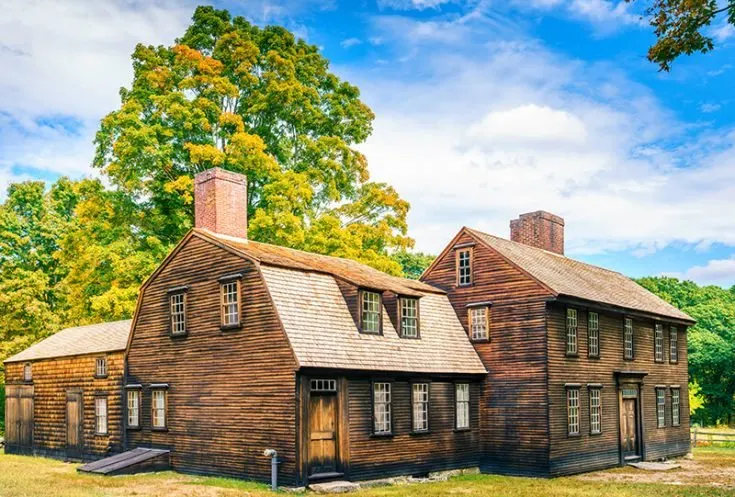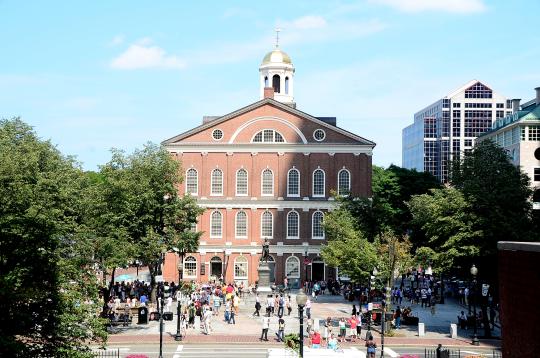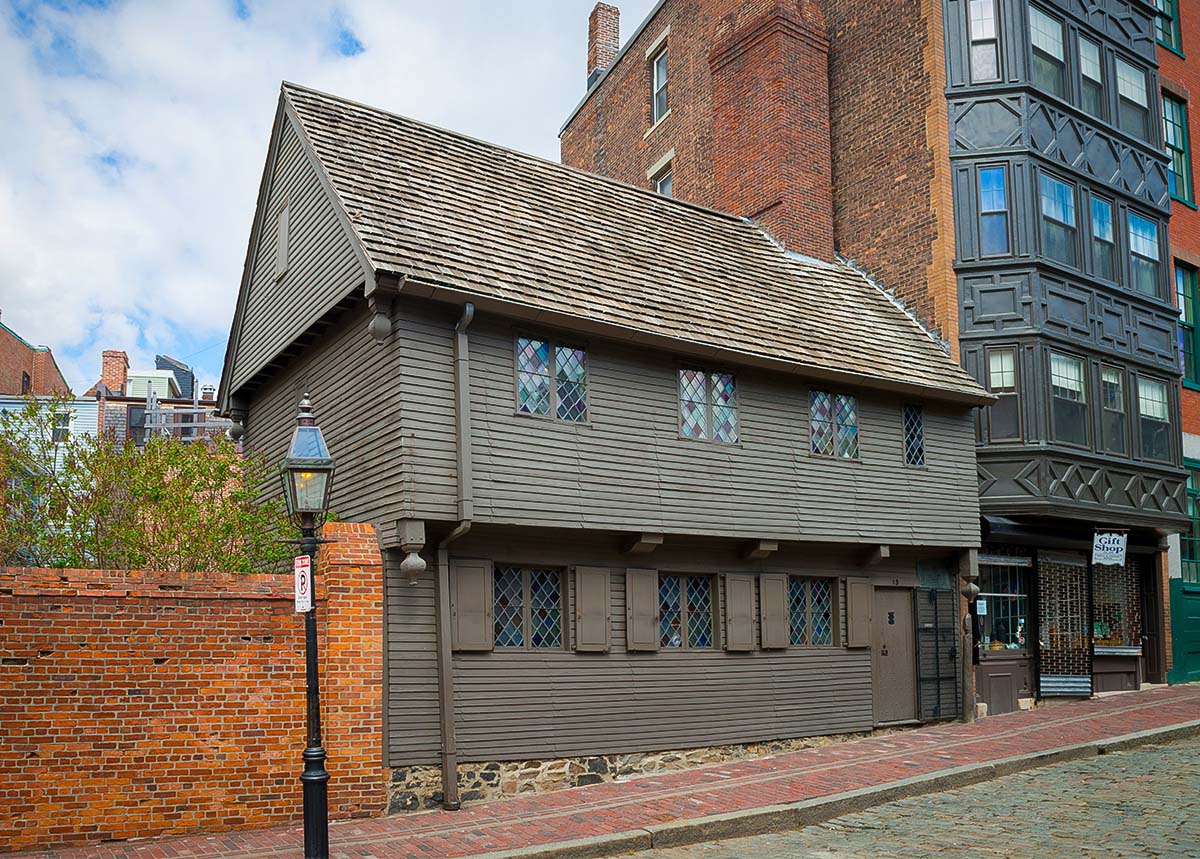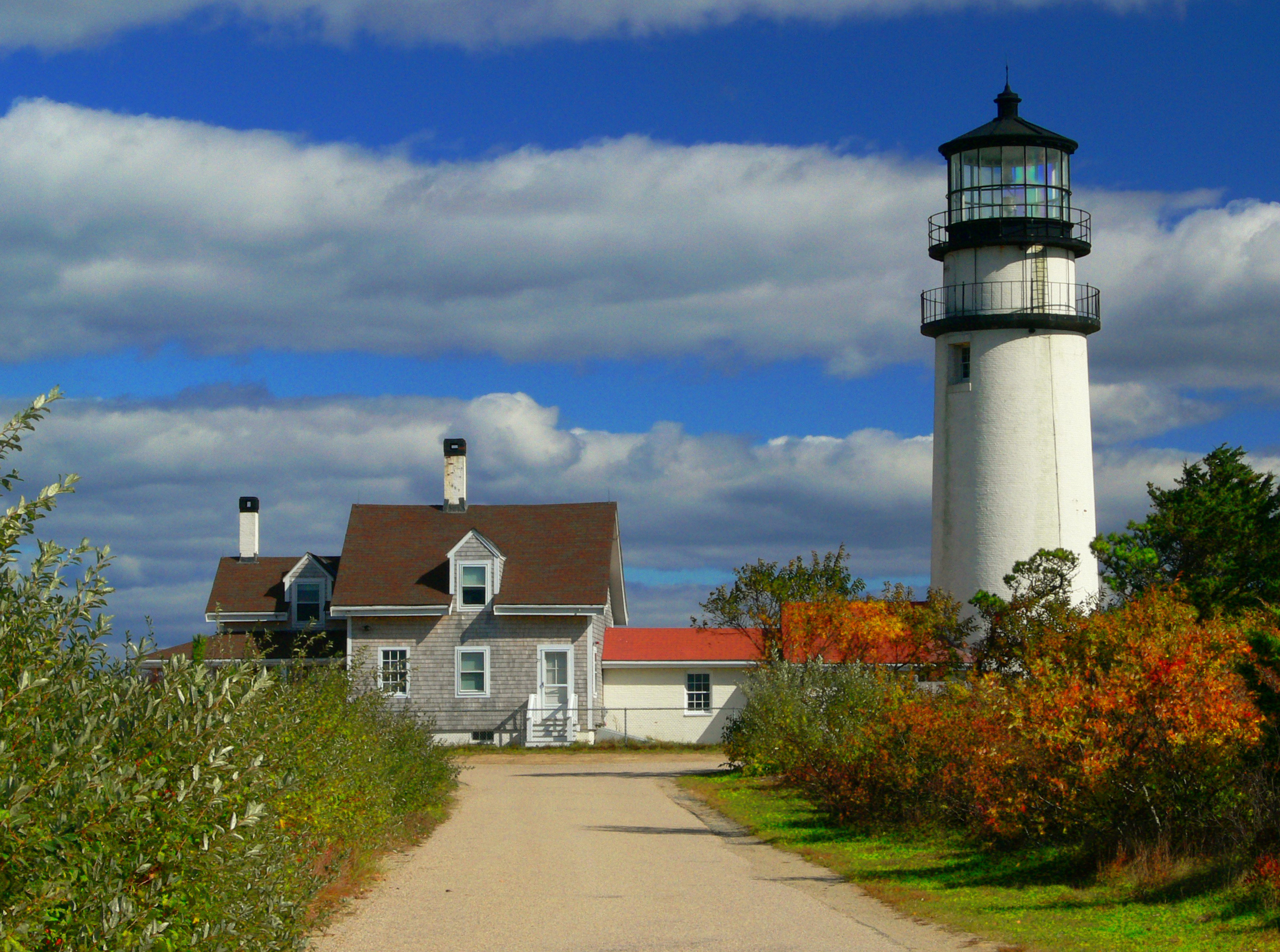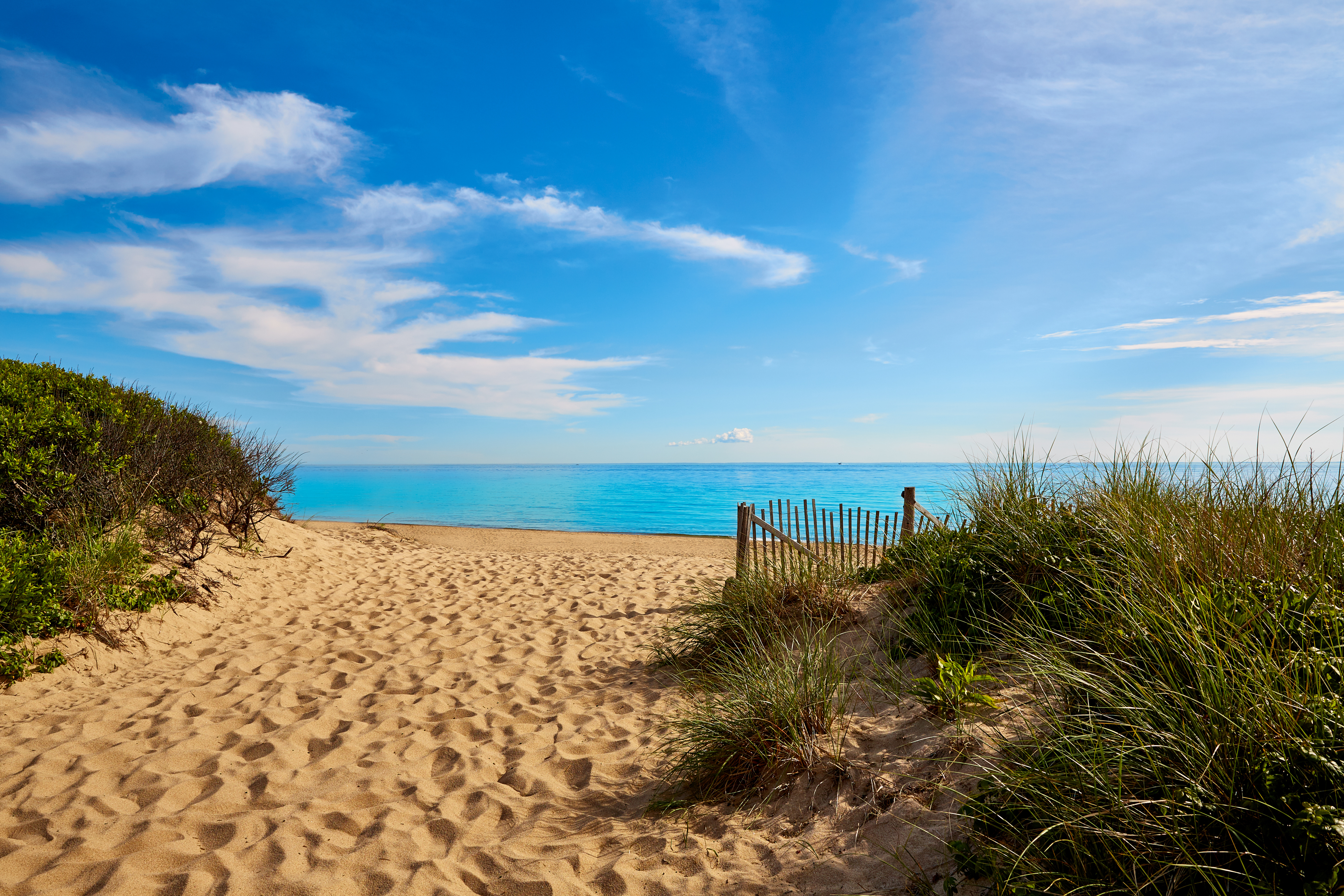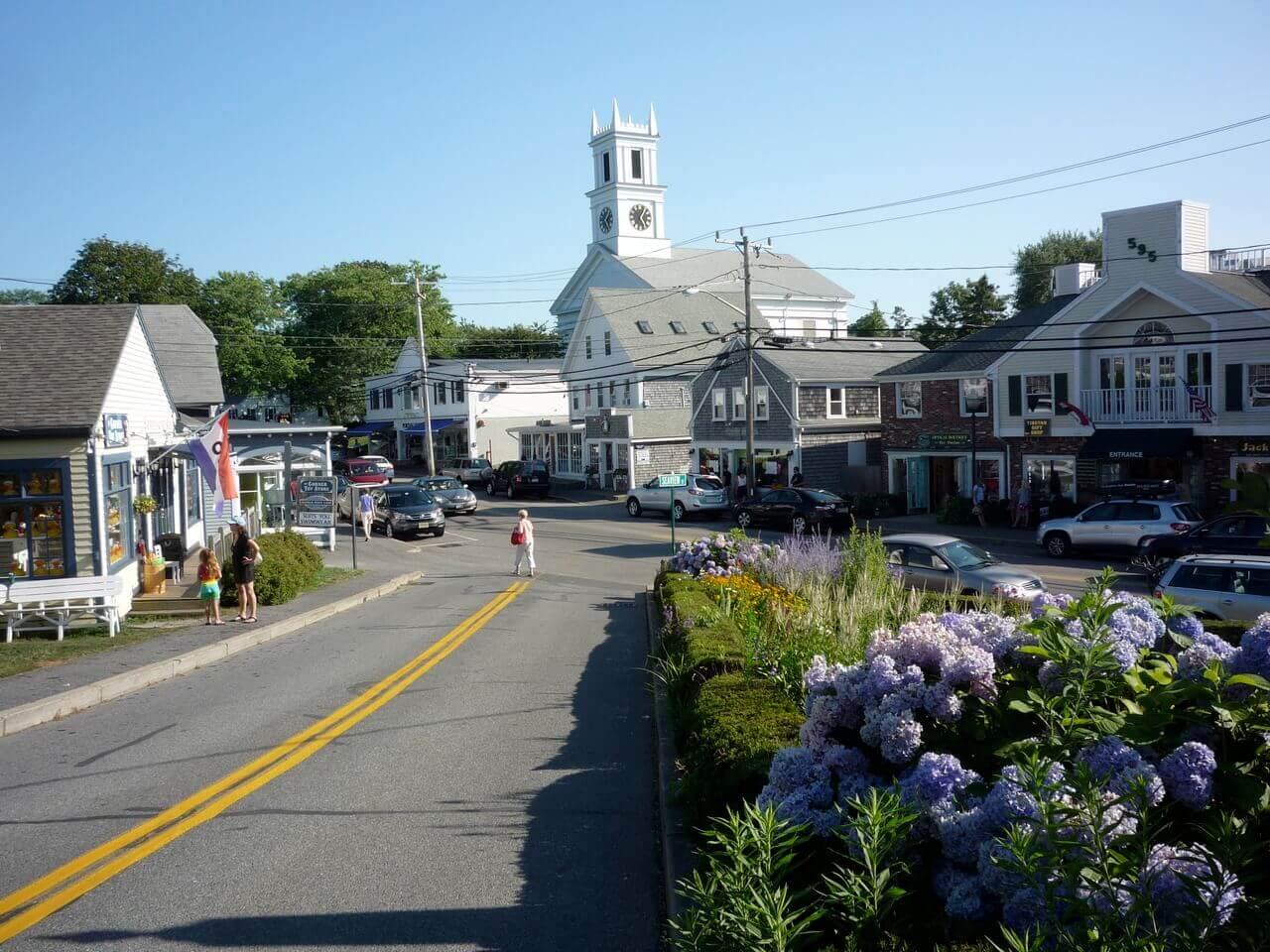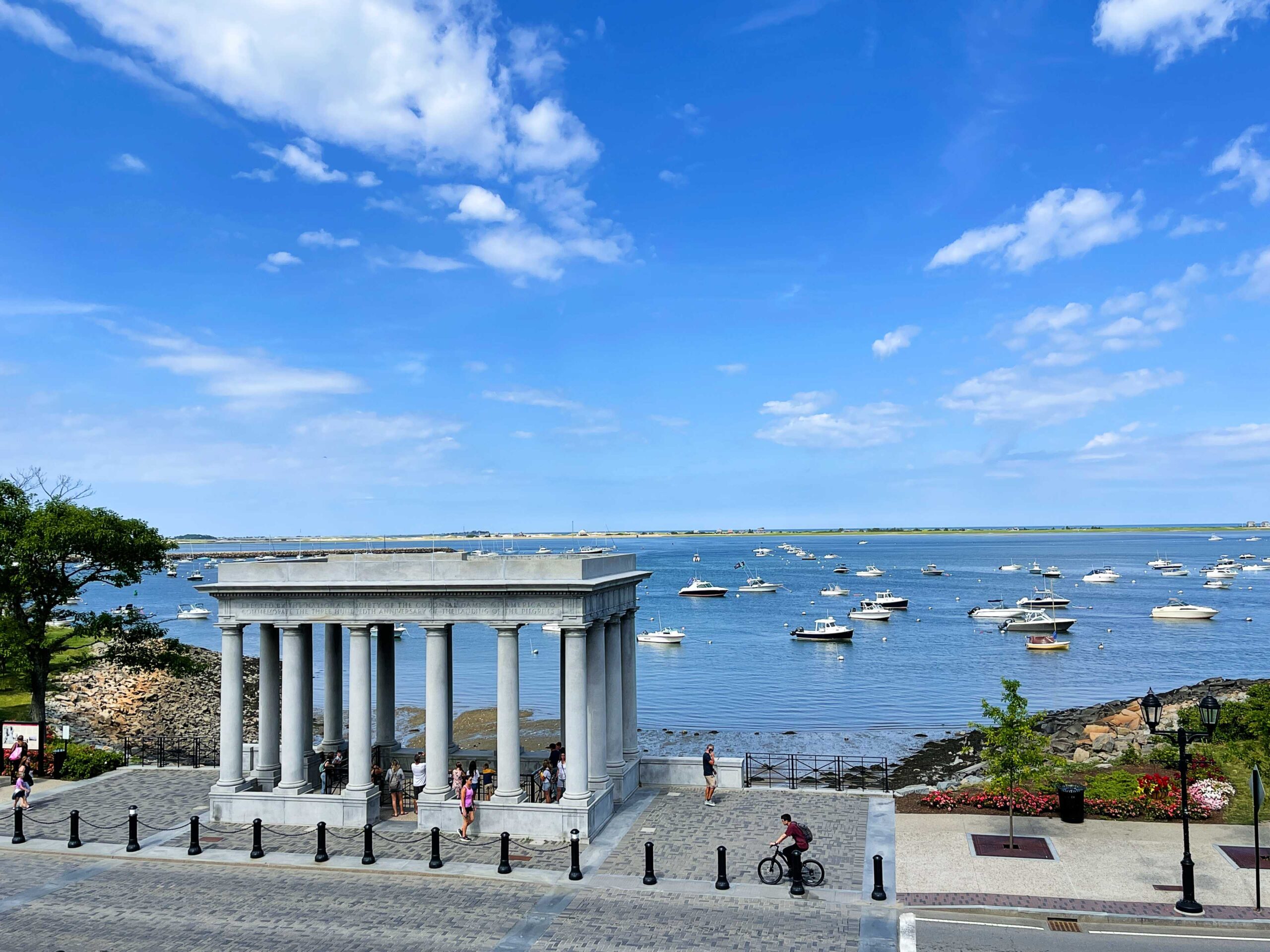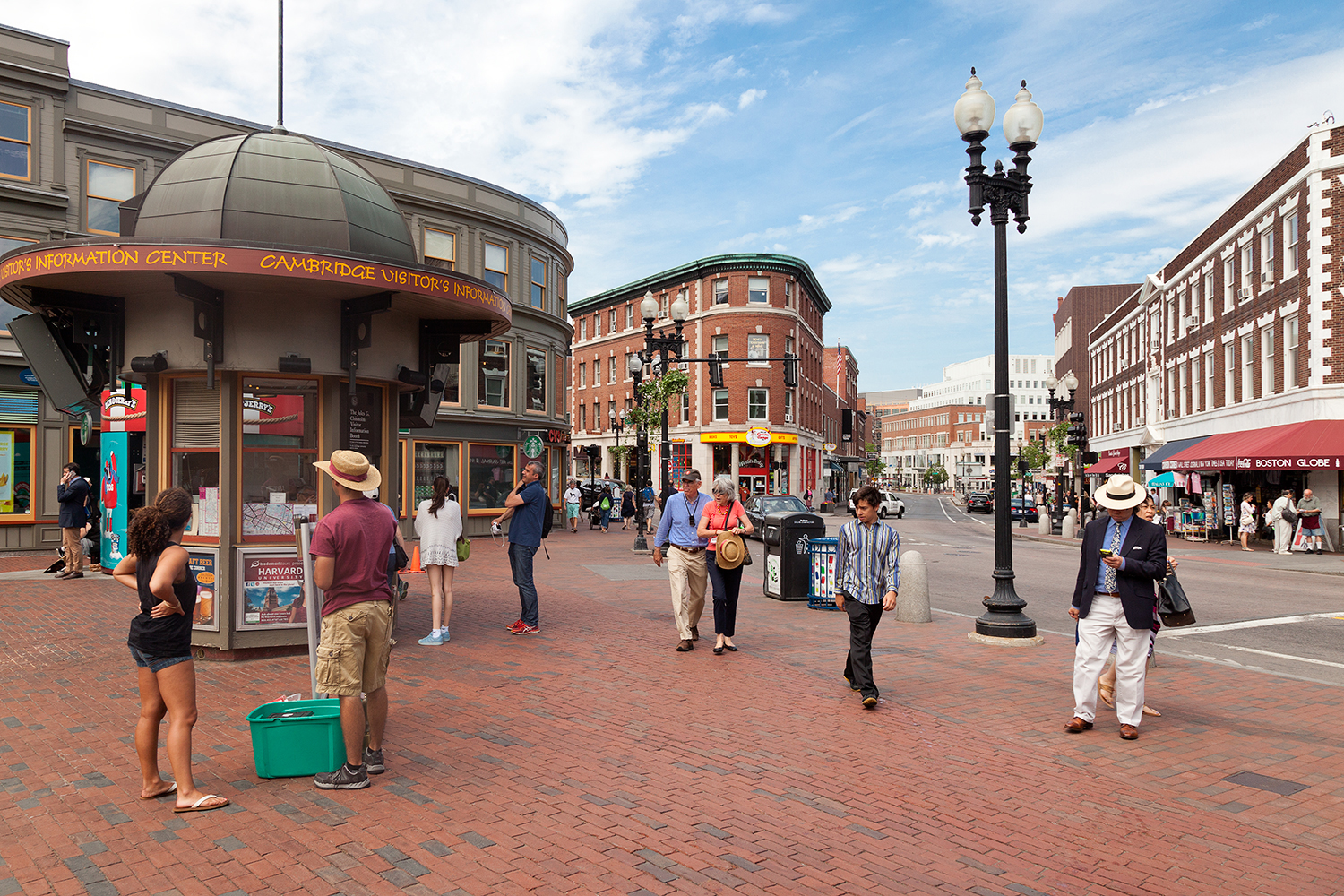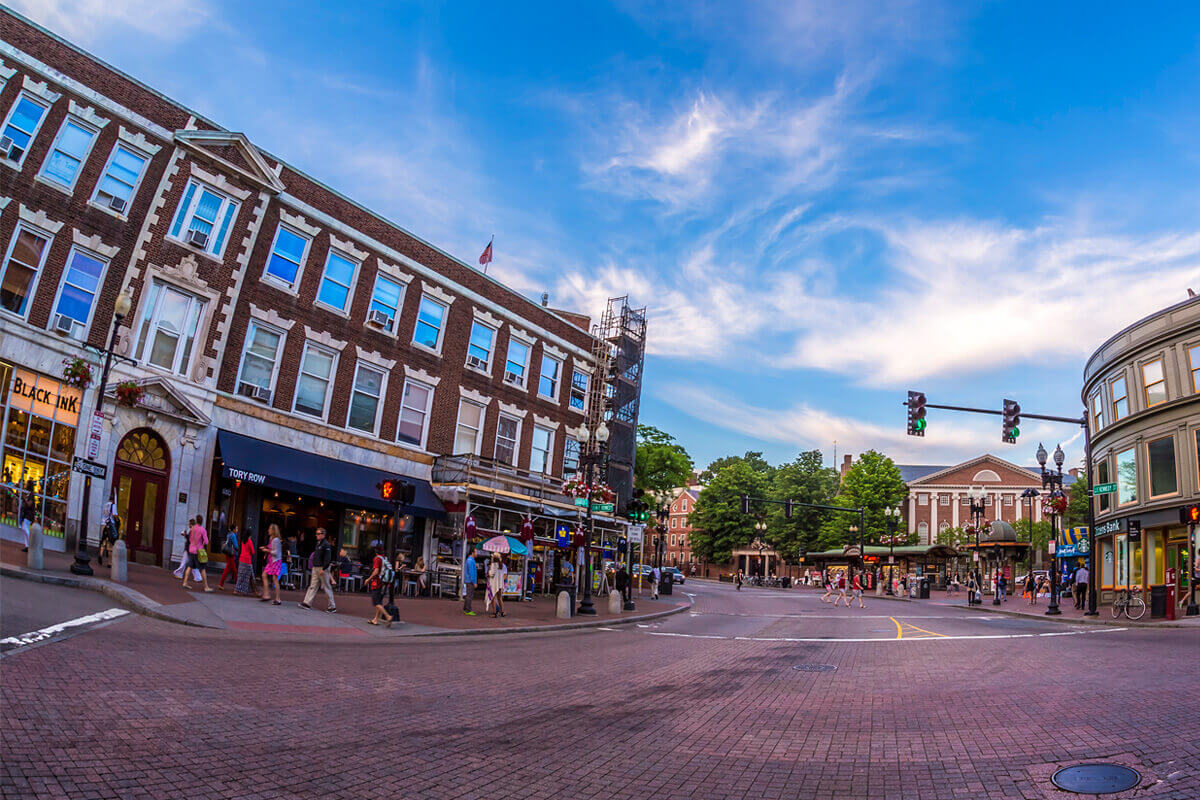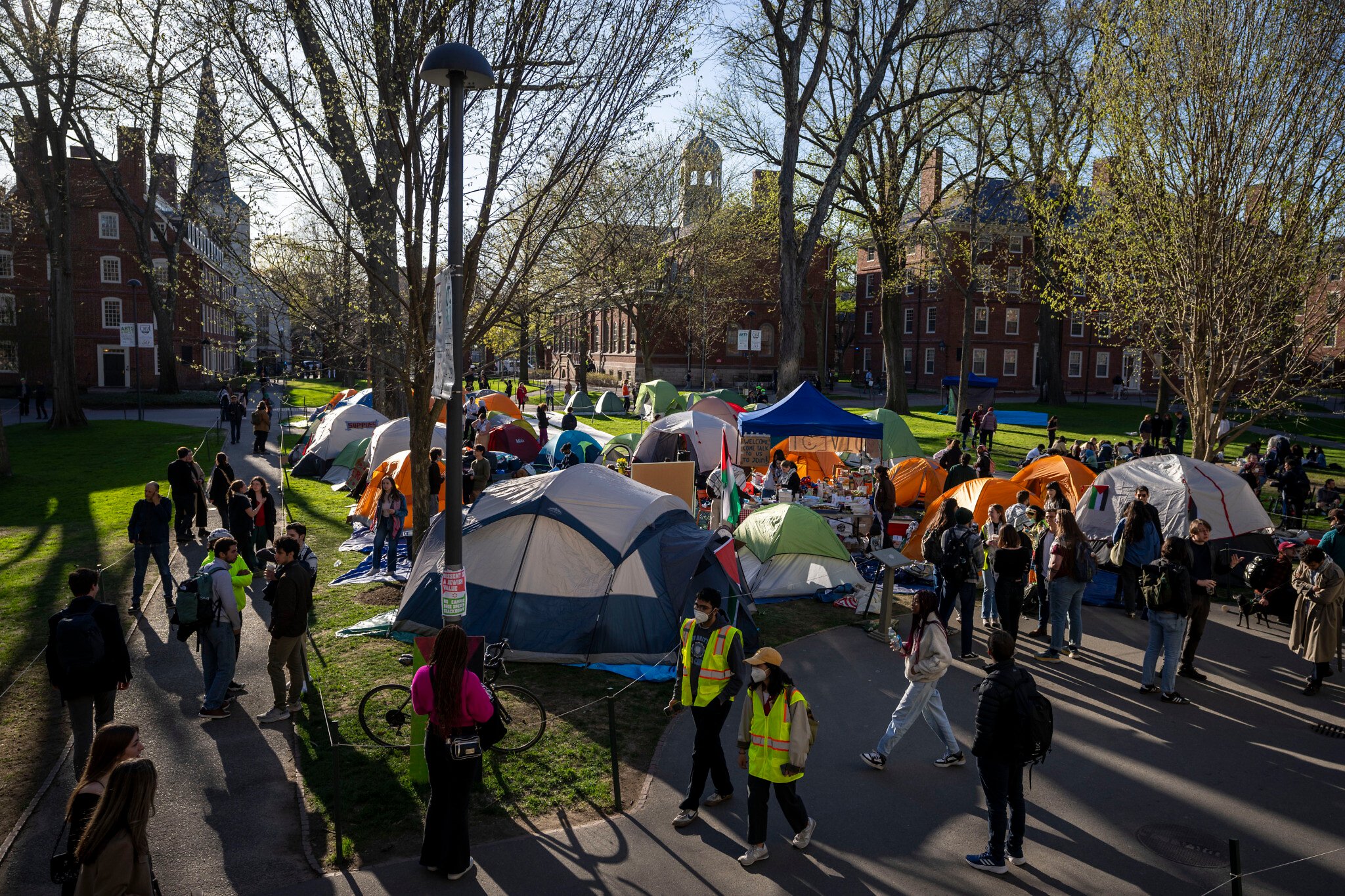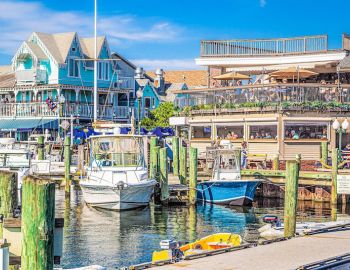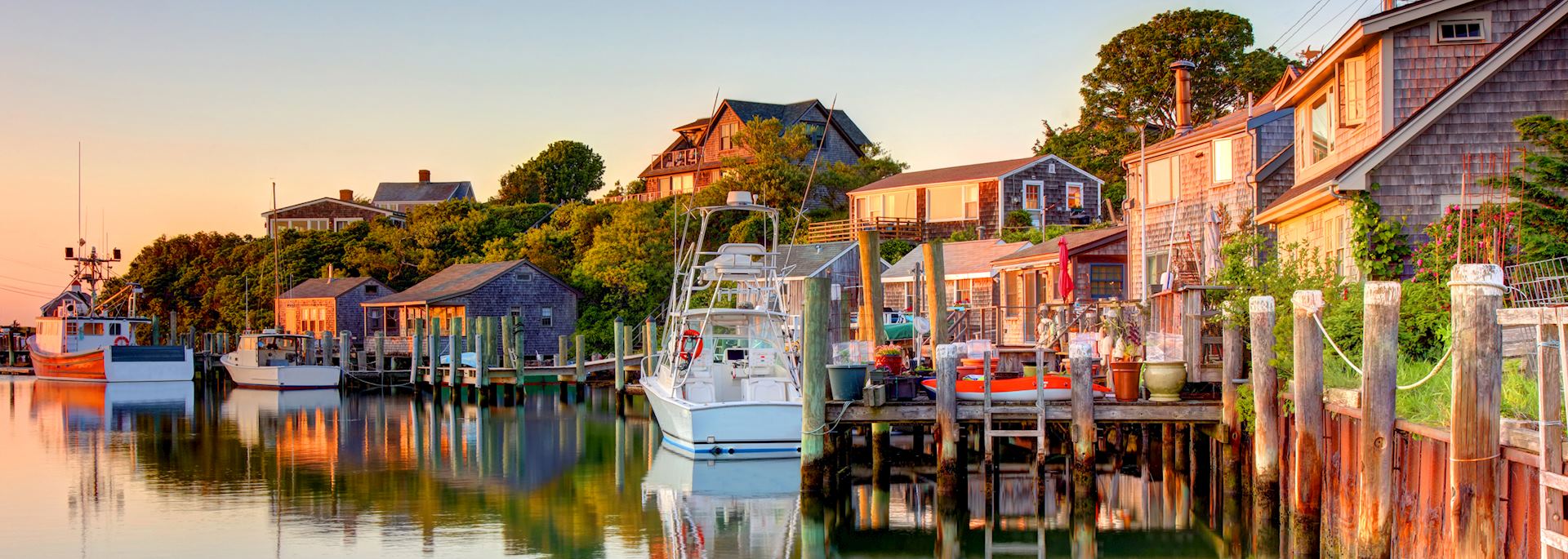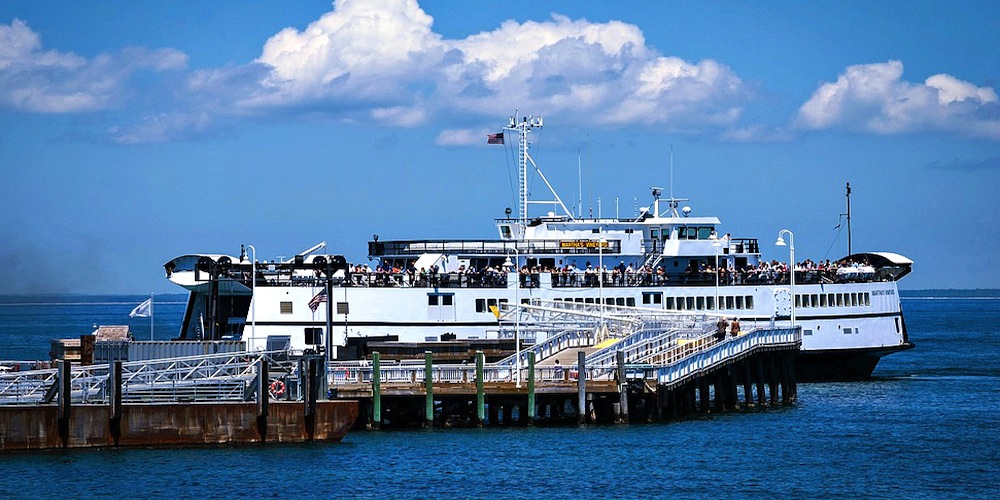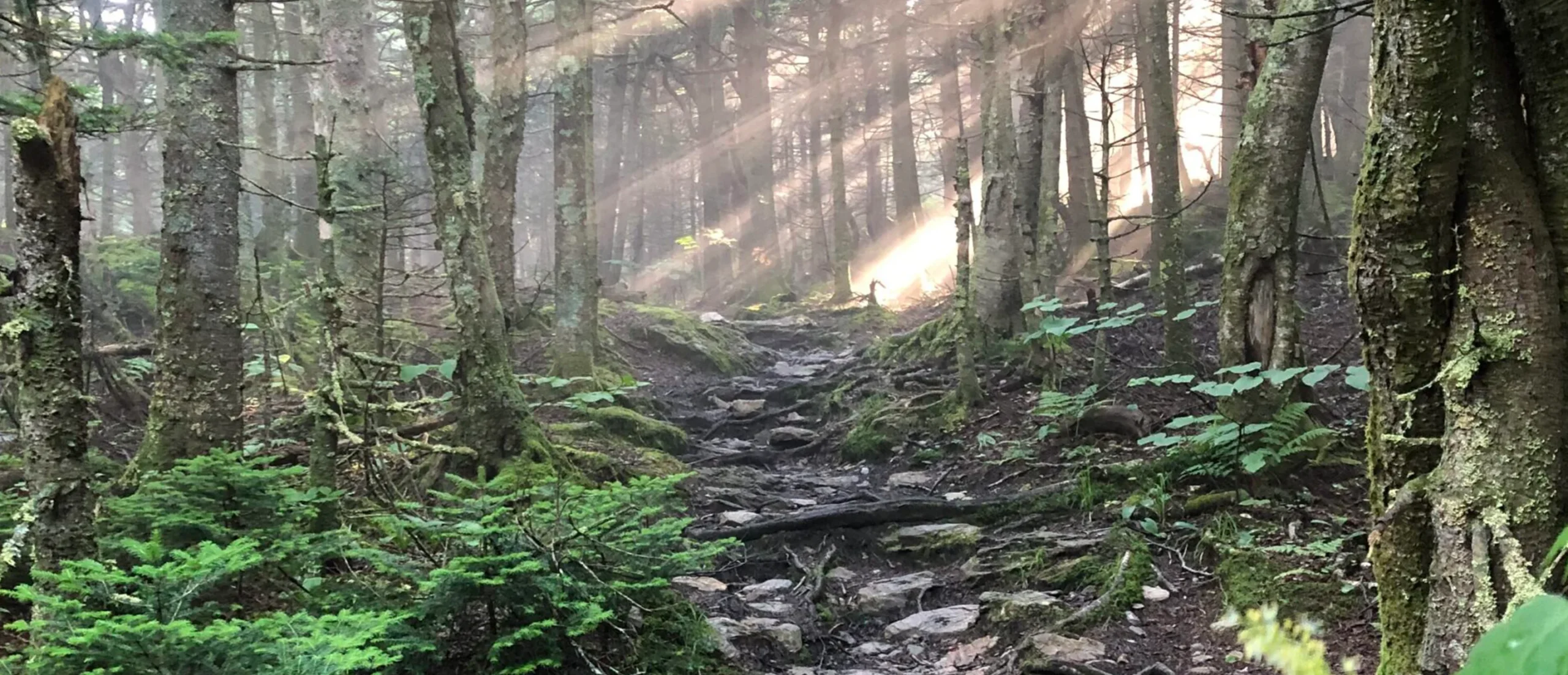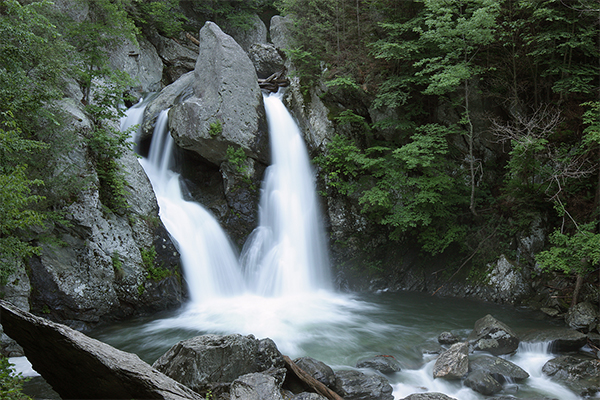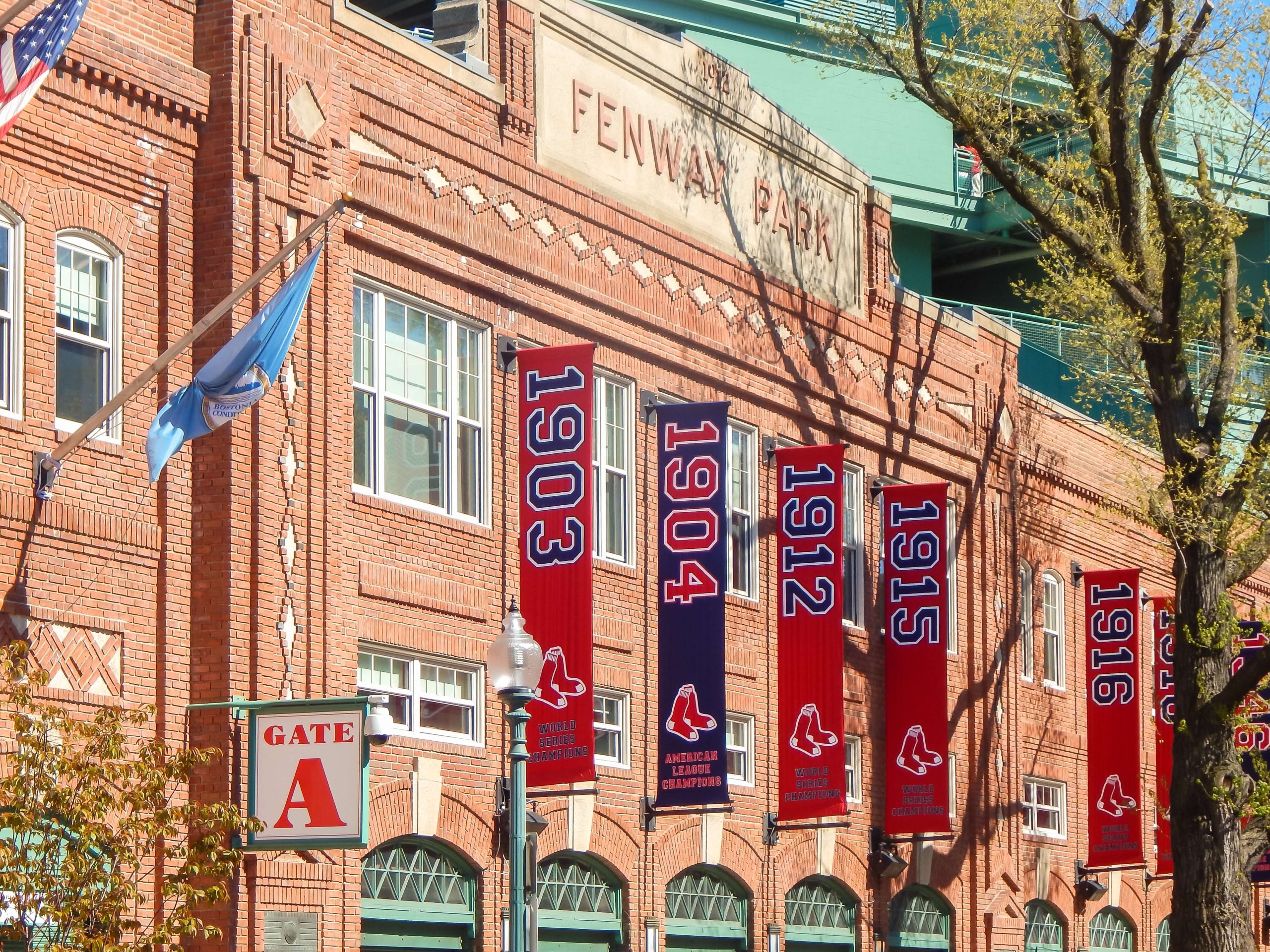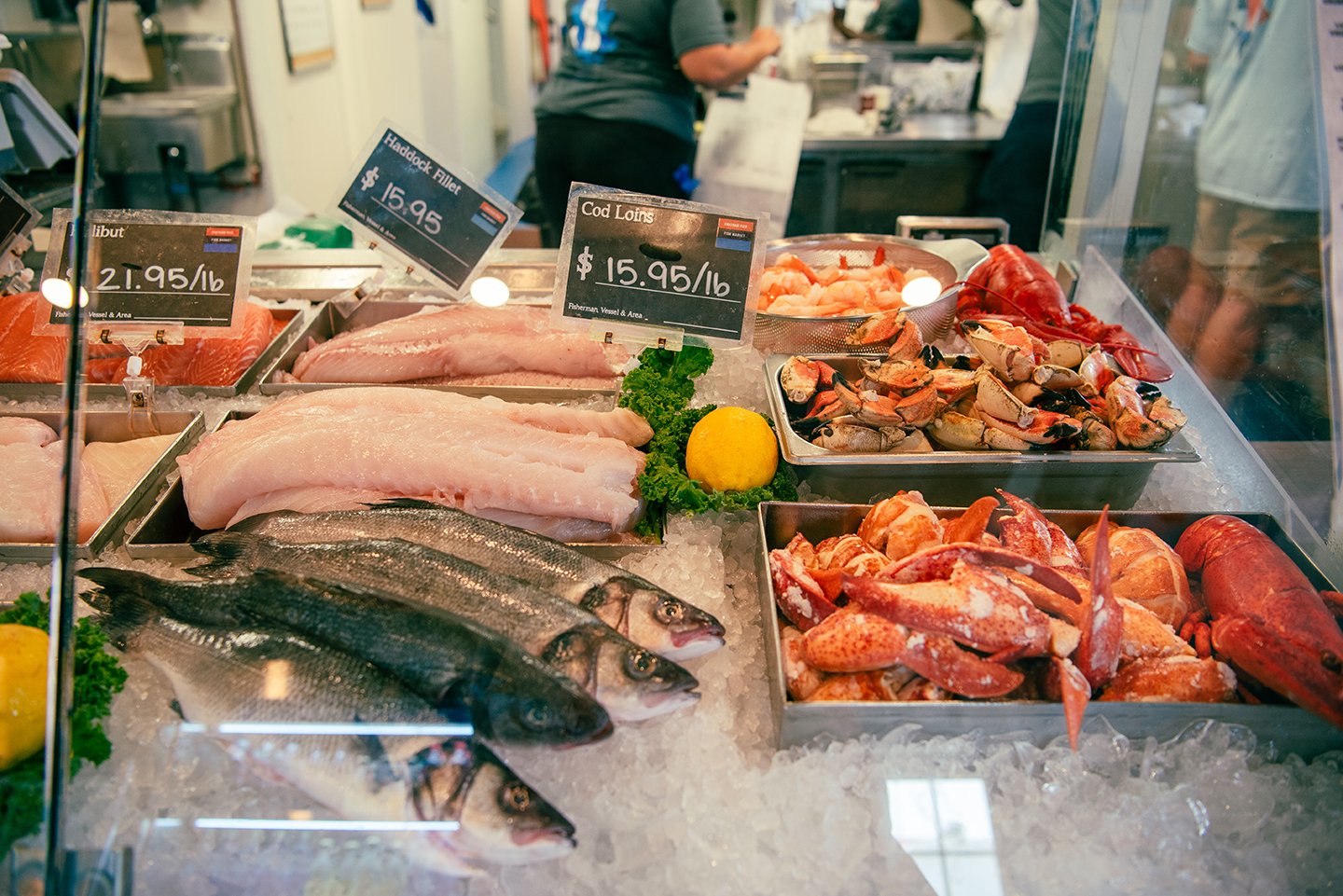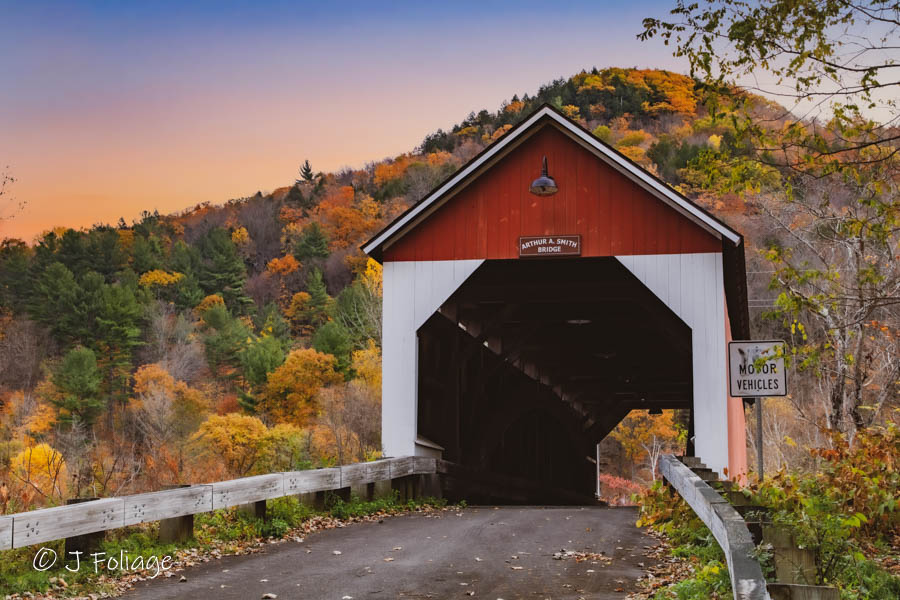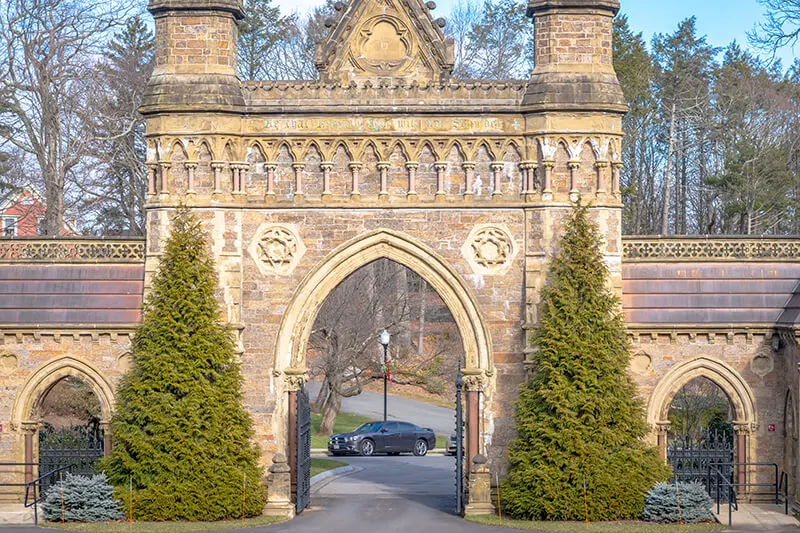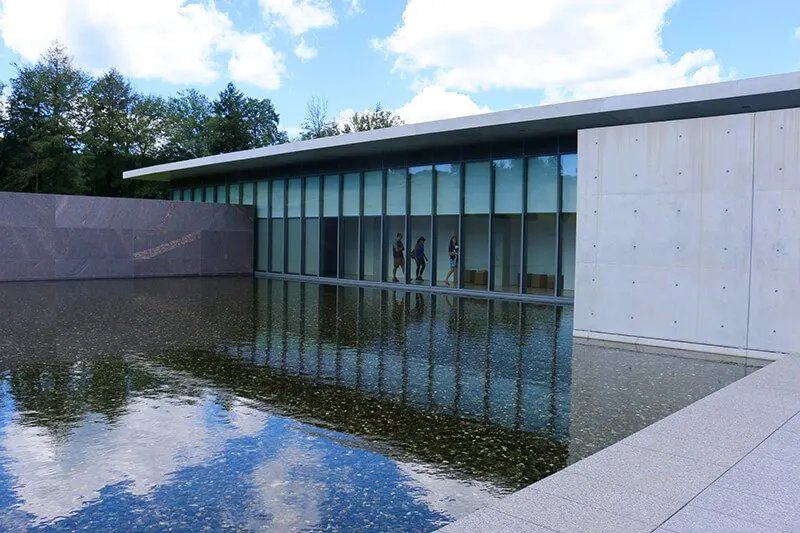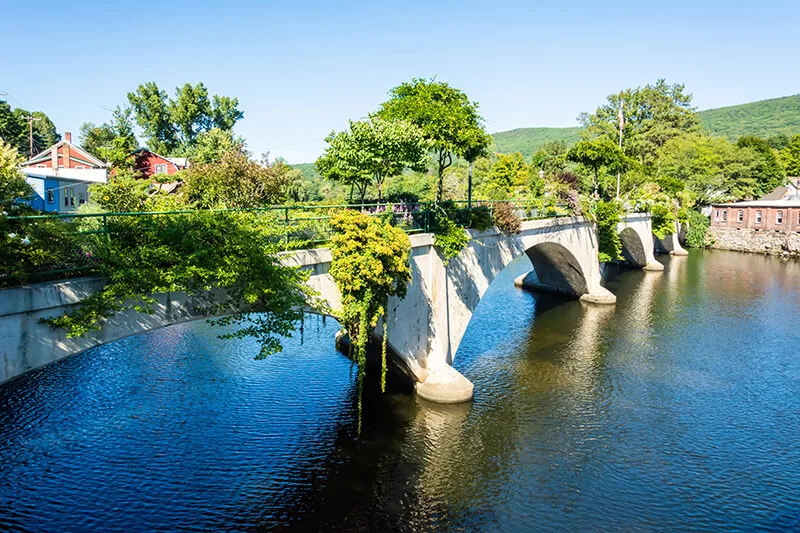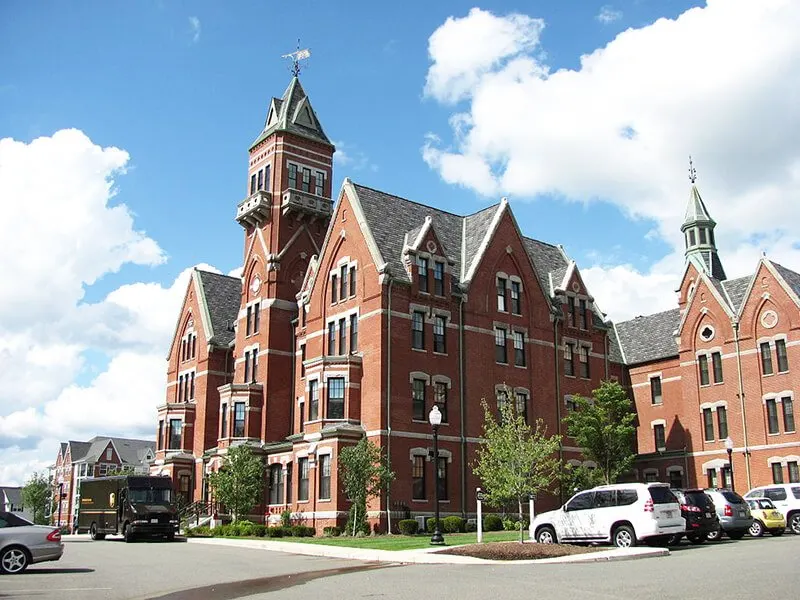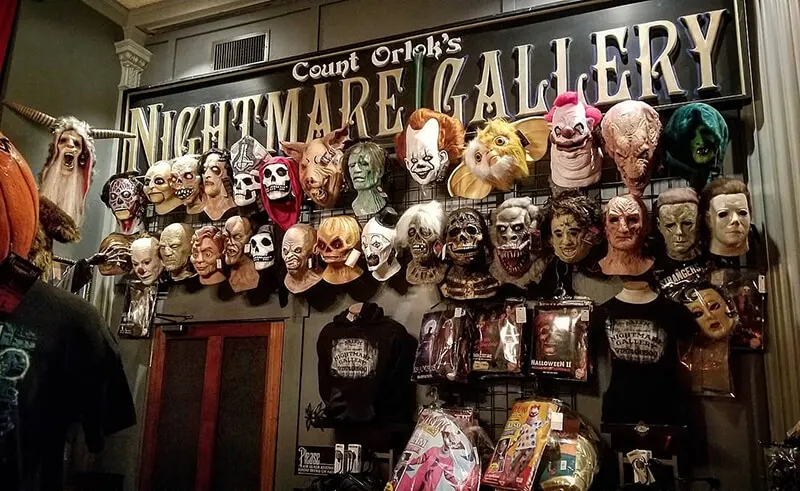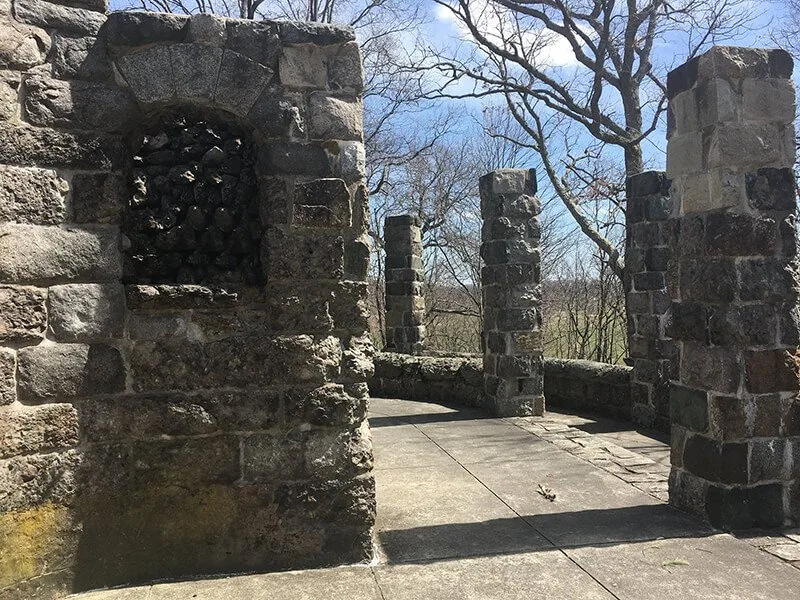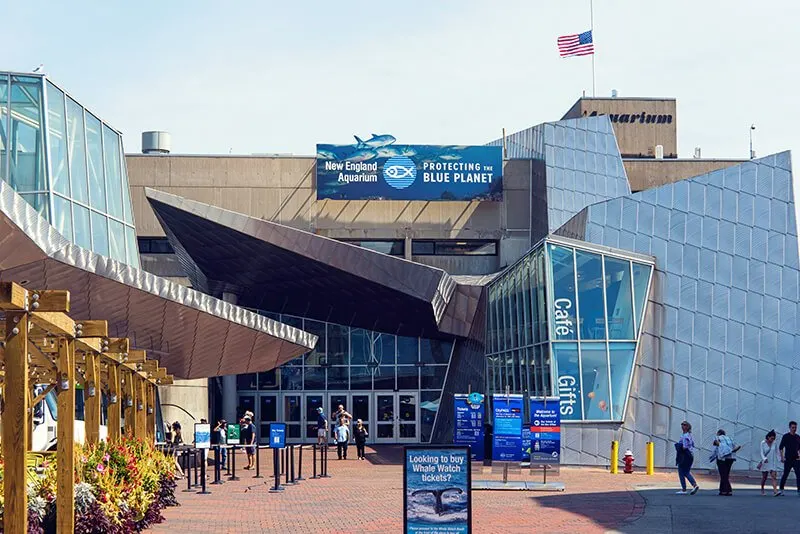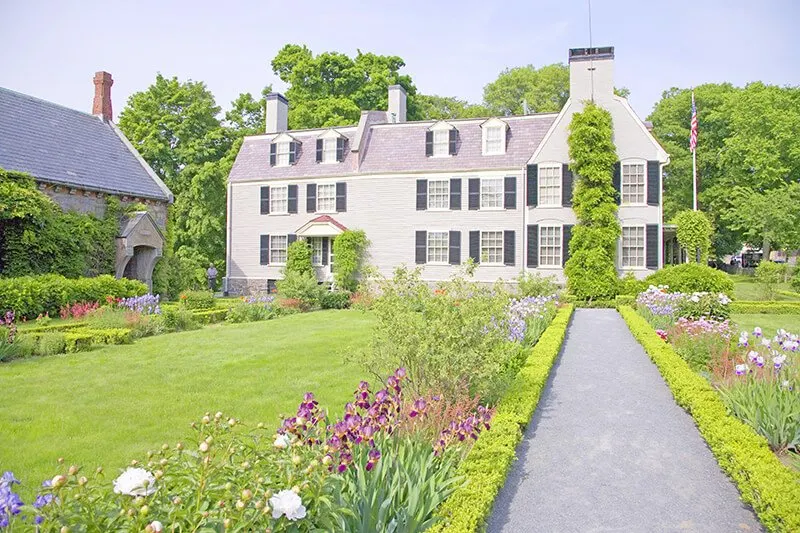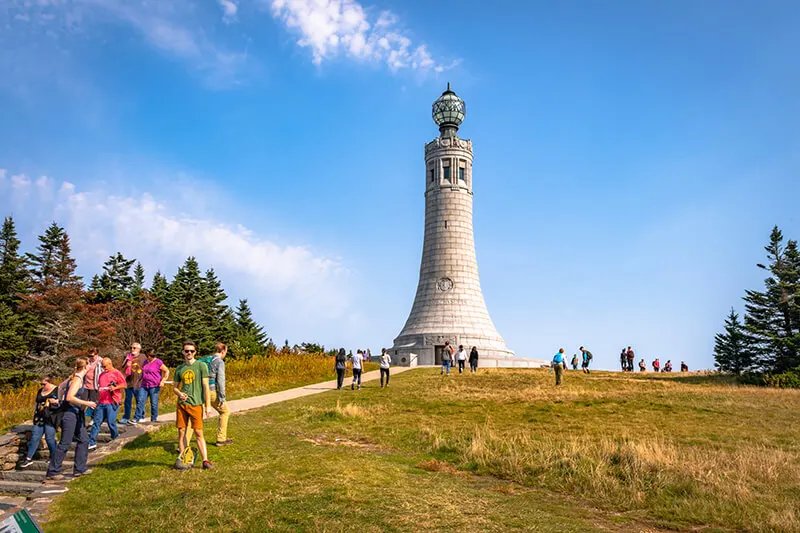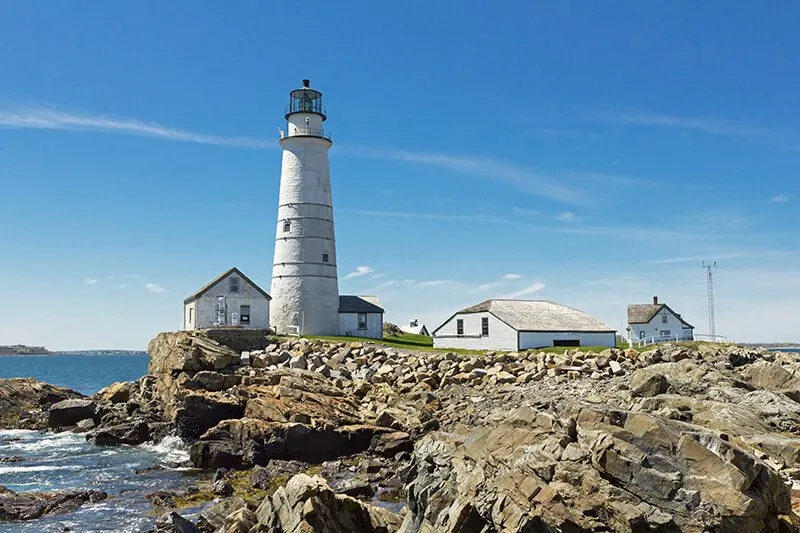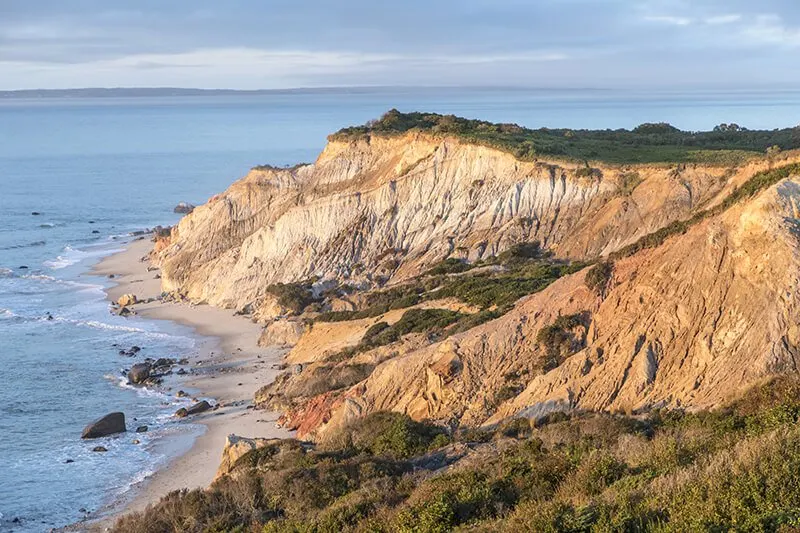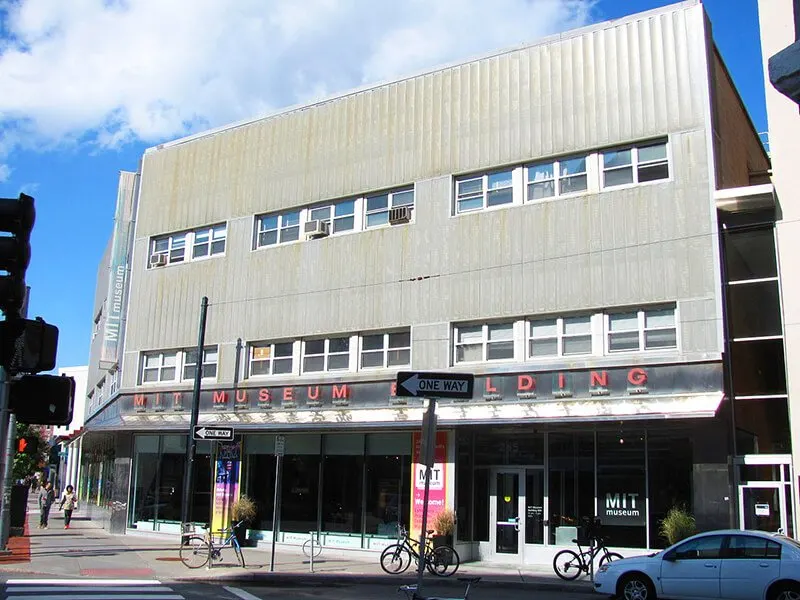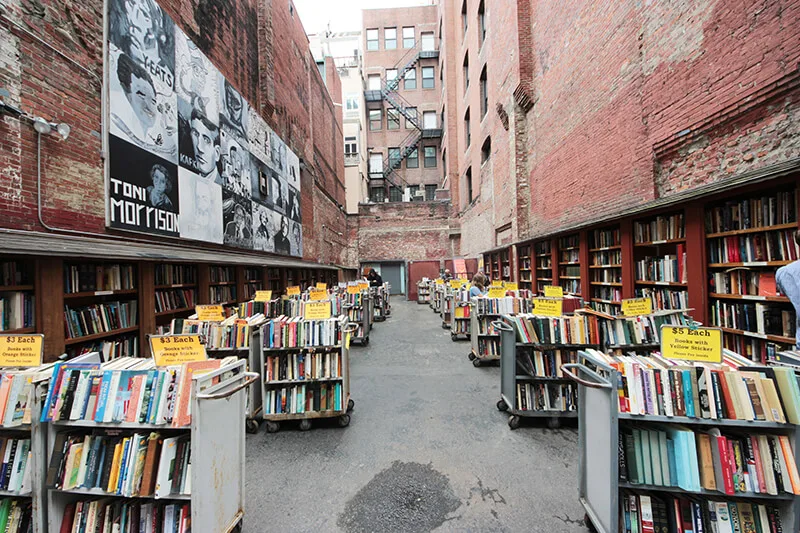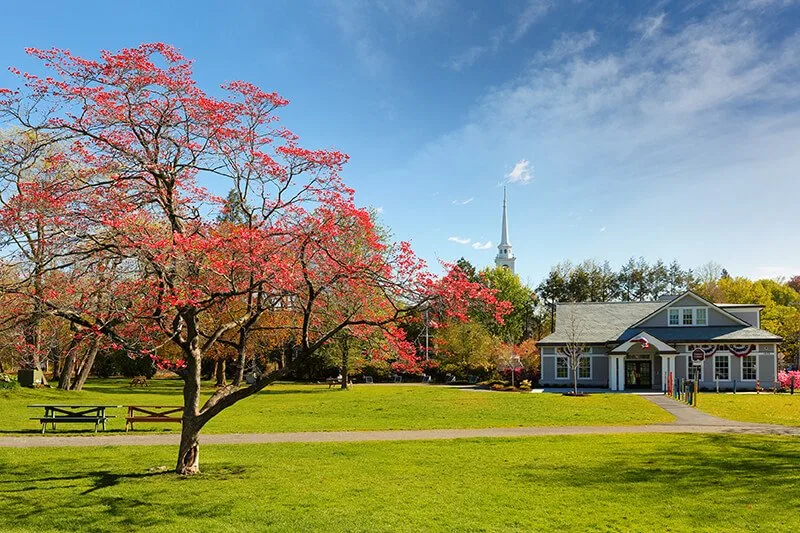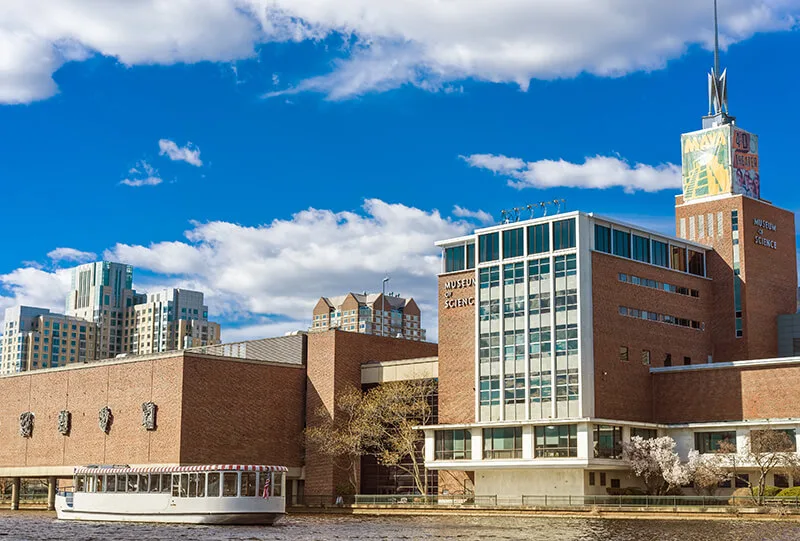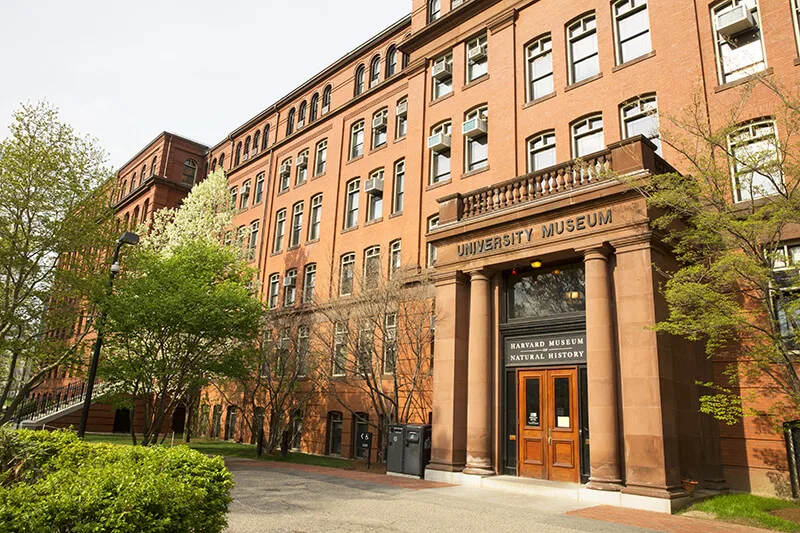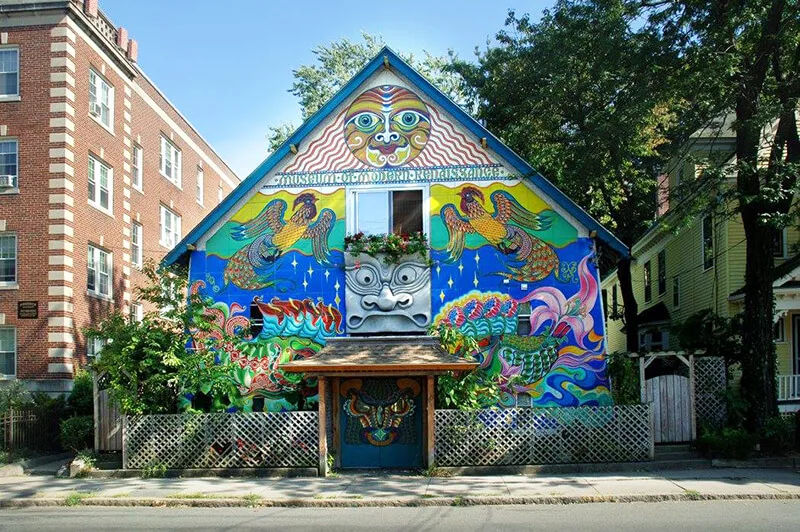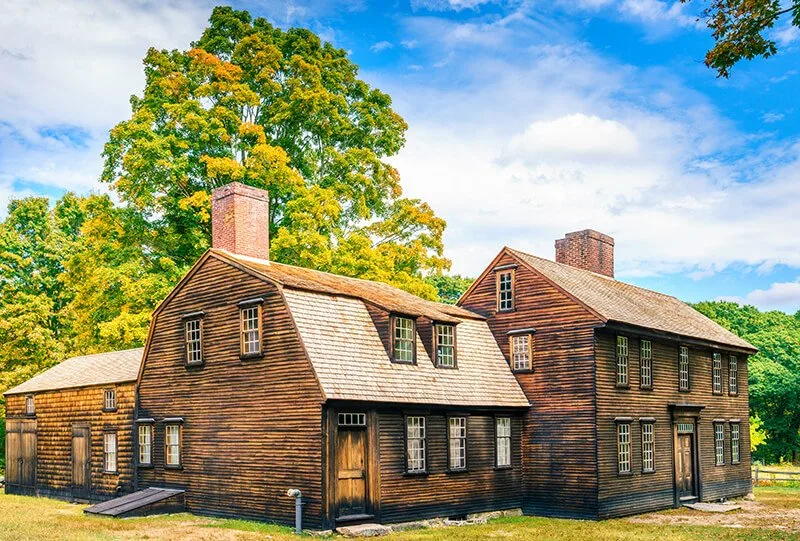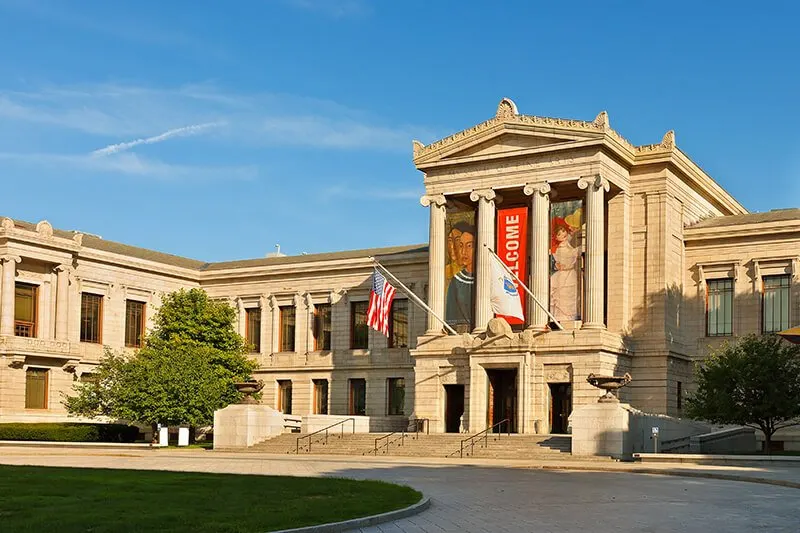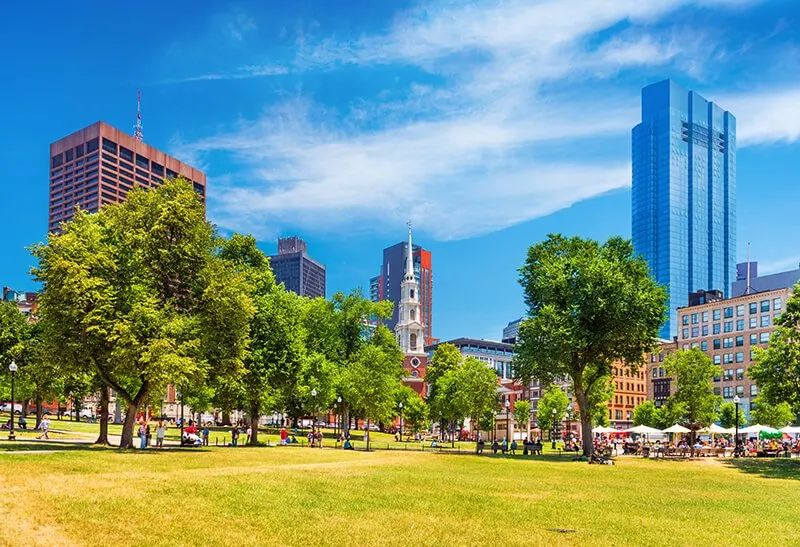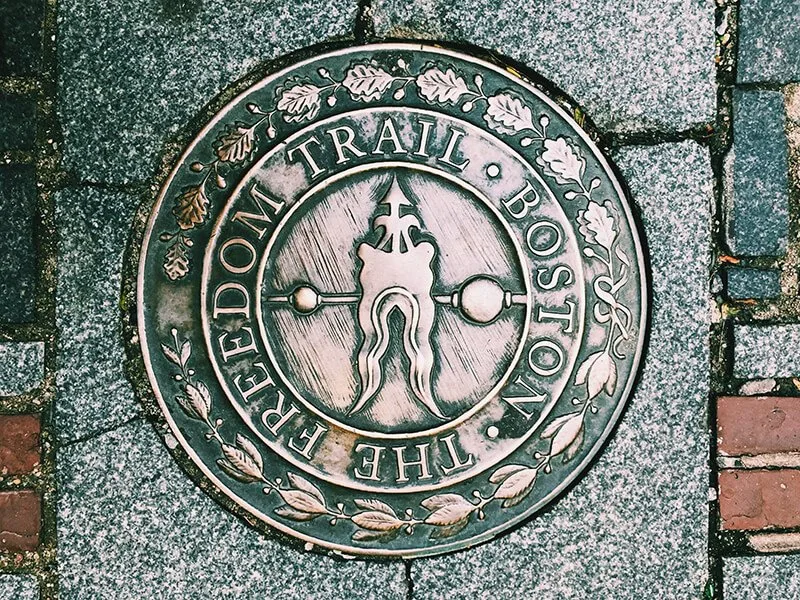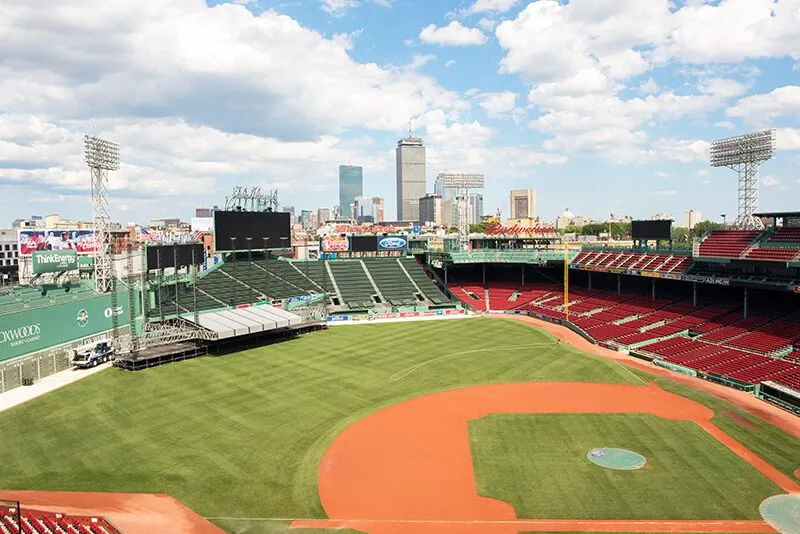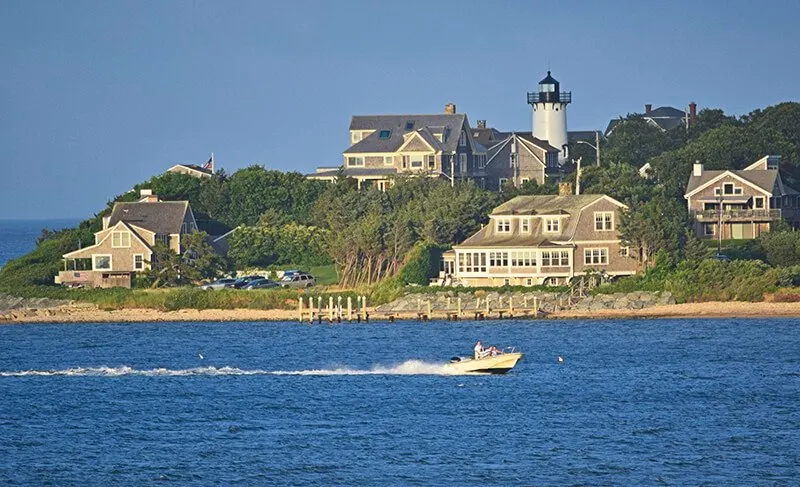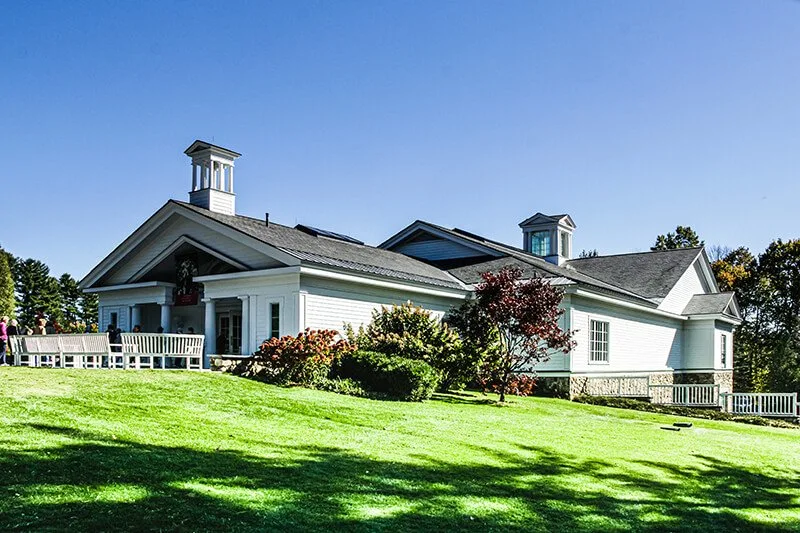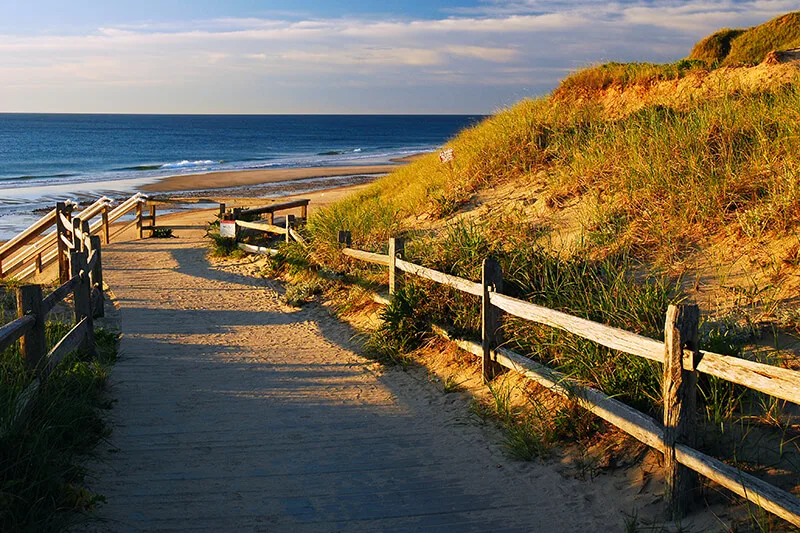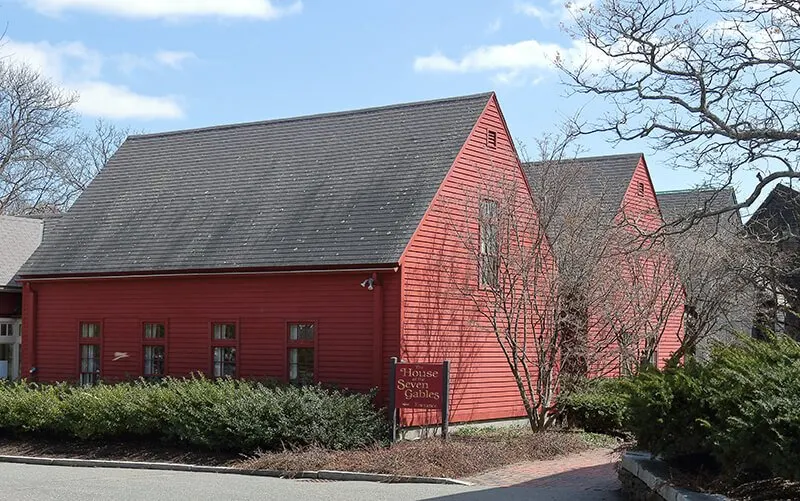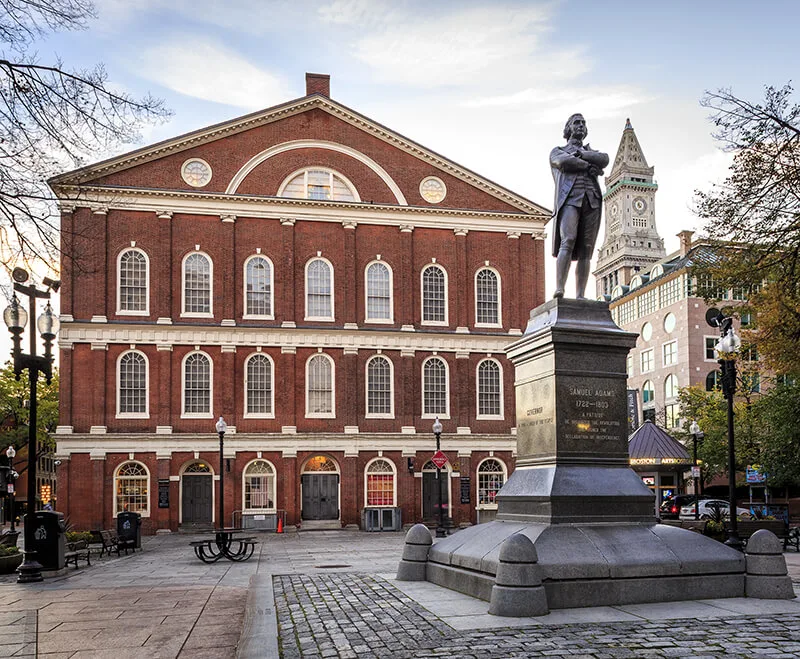The Lizzie Borden House is a must-see for people who like ghosts and other scary things.
It used to be the home of Andrew and Abby Borden, their children and stepchildren, including their youngest child Lizzie. It is in Fall River, Massachusetts.
When the couple’s bodies were found, they had been killed with a hatchet. Lizzie was the main suspect, but she was found not guilty in later cases.
Now, the Lizzie Borden House is both a bed and breakfast and a museum that anyone can visit.
From the inside, you can see a copy of the crime scene, some sad and strange items from the night, and Lizzie and her parents’ rooms.
You can stay in the rooms mentioned above as well, but be careful—reports say the building, particularly those rooms, is very haunted!
Address: 230 2nd St, Fall River, MA 02721, United States
22. Forest Hills Cemetery
Keith J Finks / Shutterstock
Forest Hills Cemetery is a Victorian-era graveyard located in Jamaica Plain, Boston, Massachusetts.
It is on the National Register of Historic Places.
Forest Hills Cemetery is a Victorian-era graveyard in Boston, Massachusetts’s Jamaica Plain neighborhood.
It’s on the list of important historic sites in the United States.
It’s spread out over 275 acres and built around a beautiful lake. It’s a peaceful mix of natural and man-made features.
Graves are often decorated with statues, and the architecture of mausoleums is often very interesting.
There are modern statues all over the grounds, which make an otherwise serious place more whimsical and fun.
The miniature town at Forest Hills Cemetery, which was made by Christopher Frost in 2006, is one of the more interesting things about the cemetery.
Each building is made to look like the home of a person buried in the graveyard.
The result is a unique collection of small houses that is one of the most interesting places to visit in Massachusetts.
A lot of interesting people from history are buried in the graveyard, including Eugene O’Neill, Anne Sexton, and E.E. Cummings.
Address: 95 Forest Hills Ave, Jamaica Plain, MA 02130, United States
23. The Clark Art Institute
The Clark Art Institute is one of only a few places in the world that is both an art museum and a place for college study.
It was made possible by a gift of art that Francine and Sterling Clark gave to the museum.
A lot of art from both Europe and the United States can be found at the Clark Art Institute.
There are paintings, drawings, sculptures, photographs, paintings, decorative arts, prints, oil sketches, and even silver on show. The styles include Renaissance, Academic, French Impressionist, and many more.
This is one of the most interesting things to do in Massachusetts if you like art.
Address: 225 South St, Williamstown, MA 01267, United States
24. Bridge of Flowers
Alizada Studios / Shutterstock
One of the most interesting and one-of-a-kind places in Massachusetts is the Bridge of Flowers.
In the past, the Shelburne Falls & Colrain Street Railway owned it. That railroad shut down in 1927.
People in the area chose to turn the old trolley bridge into a beautiful landmark for everyone to enjoy after it closed.
The remains of the railroad were then moved to the Shelburne Falls Trolley Museum, which you can also visit close to the bridge.
It’s 400 feet long, and the Bridge of Flowers is covered with carefully grown flowers that bloom all the time from April to October.
Along the sides of the path are more than 500 different types of plants, such as flowers, shrubs, and vines.
They have names on them and are great for a romantic walk!
Address: 22 Water St, Shelburne Falls, MA 01370, United States
25. Danvers State Hospital
The real-life Danvers State Hospital was the setting for Batman’s Arkham Asylum and the scary stories of H.P. Lovecraft. That’s why it’s so cool that it’s now a condo complex!
Even in its current form, the hospital is still one of the best places to visit in Massachusetts for people who like strange and unusual things.
Daniels State Hospital started in 1878 as a mental health hospital.
At first, it was a nice place that helped more than 600 people with their mental health issues by taking a sensitive and caring approach.
Unfortunately, by the 1930s, the hospital was too full, and its scary gothic look became more and more a mirror of the cruelty, inhumanity, and neglect going on inside.
Even after adding on, the Danvers State Hospital was only meant to fit 1,500 people. By the 1940s, it had more than 2,000.
Animal abuse started to happen here.
Thank goodness, neighborhood mental health care and other treatments came out in the 1960s, so the hospital wasn’t used as much.
The hospital closed in 1992.
The hospital cemetery is still there, even though the condo that is now there doesn’t say much about this sad part of Massachusetts’ past.
Address: 1101 Kirkbride Dr, Danvers, MA 01923, United States
26. Count Orlok’s Nightmare Gallery
Count Orlok’s Nightmare Gallery
Want to know about some cool places you have to see in Massachusetts?
Visit Count Orlok’s Nightmare Gallery in Salem, which is a museum of movie monsters!
Inside, there is a creepy gallery with some of James Lurgio’s personal collection of scary things and souvenirs.
You can find many life-sized models of movie monsters in Count Orlok’s Nightmare Gallery’s creepy hallways. These models are made from silicone, resin, and rubber.
About 50 characters can be seen, ranging from Nosferatu to the monsters of Fright Night and from Linda Bliar from The Exorcist to Alfred Hitchcock’s creations.
Address: 217 Essex St, Salem, MA 01970, United States
27. Ruins of Schoolmaster Hill
Fredrick Law Olmstead turned Schoolmaster Hill into a public park after Ralph Waldo Emerson lived there.
In its original plan, it had a terrace that led to a shelter, which in turn led to steps covered in vines and a house that could be used for many things.
In the end, the park building was redesigned again to make room for park services. It was then turned into a golf clubhouse.
It always had beautiful views, though, no matter what version it was.
The building was burned down in the 1930s and was never fixed up.
After about 60 years, the Boston Parks Department and the Franklin Park Coalition partly fixed it up, and that’s how it looks now.
The ruins at Schoolmaster Hill are some of the best in Massachusetts if you like to explore ruins and are looking for a place to go. They have great views of the nearby area.
Address: 1 Circuit Dr, Boston, MA, United States
28. The Museum of Russian Icons
The Museum of Russian Icons
In Massachusetts, close to Central Park in Clinton, you can find the largest collection of Russian icons outside of Russia. Did you know that?
The Museum of Russian Icons is located here. It has more than a thousand icons that show six hundred years of Russian sacred painting practice in the Orthodox faith.
An engineer and businessman from the area named Gordon B. Lankton started the collection that is now housed in the Museum of Russian Icons.
It is the only place in the United States where these unique landmarks can be seen. It is made up of houses in a mill building and a building that used to be a police station. Both of these buildings are hundreds of years old.
There are paintings of holy scenes, like scenes from the lives of the saints or the Mother of God, that are called icons.
Some have silver or gold on them, most are painted on wood, some are decorated with gold leaf, and some have panels that tell a story.
The artists who made most of them are unknown, and some of them are from the 10th century.
You should put this one-of-a-kind place on your list of things to do!
Do not forget to visit the Tea Room to try Russian sweets, drinks, and snacks.
Address: 203 Union St, Clinton, MA 01510, United States
29. New England Aquarium
FrimuFilms / Shutterstock
The New England Aquarium is in Boston, Massachusetts, right on the water.
It’s a fun place to visit with over 550 kinds of marine life, or 20,000 individual animals. It covers an amazing 75,000 square feet.
It is also the largest aquarium in New England, with about 1.3 million visitors each year.
You can see sharks, turtles, seadragons, eels, barracudas, and more at the New England Aquarium.
The Caribbean reef, the Edge of the Sea touch tank, and the four-story-tall Giant Ocean Tank, which is filled with coral reefs, are some of the exhibits.
Another thing is that there is an IMAX theater that shows short pictures about nature.
Address: 1 Central Wharf, Boston, MA 02110, United States
30. Adams National Historical Park
Joseph Sohm / Shutterstock
After 1927, the Adams National Historical Park continued to be the home of two American presidents and their children and grandchildren.
It was made as a park to protect the famous homes of President John Adams and four generations of his family. Other goals were to promote patriotism, show the past of the family and the country, and teach people.
President John Adams always wanted to be a farmer and live a simple life. When he was done being president, he built Peace Field, which was his farm.
At Adams National Historical Park, you can see both the farmstead and the house where he grew up.
Both of these websites do a great job of showing how complicated the late president’s life was and how hard it was for him mentally.
For history buffs, the park is without a question one of the best things to see in the city of Massachusetts.
Address: 133 Franklin St, Quincy, MA 02169, United States
31. Mount Greylock
Keith J Finks / Shutterstock
For the most part, Mount Greylock in Adams is one of the best places to visit in Massachusetts. At 3,491 feet, it’s the state’s tallest peak.
It has breathtaking views of the area, including the five states that border it. The wide views will take your breath away.
The Massachusetts War Memorial Tower is another famous peak on Mount Greylock. It has a signal that is lit up every night and can be seen from 70 miles away.
There is also a hotel at the top of Mount Greylock that was built by the Civilian Conservation Corps.
Address: MA, United States
32. Bodega
Looking for some high-end fashion fun in Massachusetts?
Seek out Bodega, a carefully hidden location behind a secret door of an unassuming corner store.
From the outside, that corner store just looks like a generic convenience shop filled with non-perishables, household basics, and snacks.
But when you journey to the back, you’ll find an old Snapple machine that you’ll never guess hides one of the coolest things to do in Massachusetts.
Slide the machine and you’ll find out that it’s actually a secret door concealing the true nature of Bodega.
Bodega is filled with shelves that hold skate fashion and street fashion from high-end brands, and it’s a well-kept secret that is advertised by word of mouth!
Address: 6 Clearway St, Boston, MA 02115, United States
33. Boston Harbor Islands National Recreation Area
The Boston Harbor Islands National Recreation Area is a group of islands and a piece of the mainland Massachusetts that are protected by the National Park Service.
Many years ago, when the United States was a colony, the bay was used as a shipping port.
When it was fixed up in the 20th century, it became a great place to relax. This weekend, you and your family can make it that place!
At the Boston Harbor Islands National Recreation Area, you can enjoy the Harborwalk, an interactive path that leads you past many beaches, parks, and cafes, as well as a number of hiking areas with places to fish and have picnics.
The leisure area on Little Brewster Island also has Boston Light, which is the oldest lighthouse in the United States.
Address: 191w Atlantic Ave, Boston, MA 02109, United States
34. Aquinnah Cliffs
travelview / Shutterstock
The Aquinnah Cliffs of Massachusetts, which are also called the Gay Head Cliffs, are on the western side of Martha’s Vineyard, on a Wampanoag territory.
The clay rocks were formed by glaciers millions of years ago.
Because of this, orange and red clay mix with sand to make a beautiful rainbow effect.
The Aquinnah Cliffs aren’t hard to get close to.
You can get to them by following trails on Moshup Beach. If you walk to the top, you can see views of the Elizabeth Islands and the Gay Head Light.
It is important to follow any rules that are in place at the Aquinnah Cliffs because they are one of the protected Massachusetts sites!
Wampanoag people who own the land think that the cliffs’ red clay comes from the famous Wampanoag founder Moshup, who is said to have hit whales against the cliffs to feed his people.
Address: 31 Aquinnah Cir, Aquinnah, MA 02535, United States
35. Bash Bish Falls
Daniel Sarnari / Shutterstock
Bash Bish Falls is one of the most beautiful places in the US. It is in the southwestern part of Massachusetts.
It’s a beautiful waterfall with scary stories and legends about danger that surround it. It drops 80 feet into a small creek and pool.
The spot at the top of the waterfall is one of the most beautiful in the state. It has a view that goes all the way to New York’s Taconic State Park.
Where did the name “Bash Bish Falls” come from?
Well, a scary story says that a Mohican woman named Bash-Bish was accused of adultery and was sent falling down the falls while being tied to a boat. She insisted she was innocent.
The story also says that her daughter White Swan killed herself by jumping off the falls when she couldn’t have a baby.
Many people say that visiting Bash Bish Falls is a must, but you should be careful when you get there.
There have been 25 deaths because people jumped or fell from the top of the falls into the small pool below.
Steel wires are put up along the walkways to try to keep that danger at bay, and many people think the mild risk is worth it for the beauty of the land.
Yes, as long as you watch out!
Address: MA, United States
36. Massachusetts Institute of Technology Museum
For people who are interested in science, the Massachusetts Institute of Technology Museum in Cambridge is one of the best places to visit in the state.
It gathers, protects, and displays a lot of different things that are connected to the university it is named after. This teaches people about MIT’s history and the role it played in shaping modern society.
There is also a permanent collection of tools made by Arthur Fanson at the Massachusetts Institute of Technology Museum.
Ganson used to be an artist in residence at MIT and made a lot of fun, quirky, and personality-filled tools that do some really cute and interesting things.
These are machines that do things like oil themselves, bounce all the time, drag things, or do other strange and odd things.
Address: 265 Massachusetts Ave, Building N51, Cambridge, MA 02139, United States
37. Brattle Book Shop
The Brattle Book Shop is a fun place for book lovers to go in Massachusetts!
It is in downtown Boston, close to the Boston Common. It is hidden between two red brick houses and is an antique bookshop.
The store has been selling used books since 1825. It now has over 250,000 books, pictures, postcards, and maps from many different periods and types.
There are a lot of general-use books on the shelves on the bottom two floors of the Brattle Book Shop.
The spaces between them are tight, and there are step stools all over to make it easy to reach the higher shelves.
On the third floor, there are rare and first-edition books that are fun to look through.
And, of course, right outside the shop, there is a sale area outside with cheap books strewn around on tables and racks.
Address: 9 West St, Boston, MA 02111, United States
38. Lexington Common National Historic Site
The Lexington Common National Historic Site, which is also called the Battle Green, is a National Historic Landmark and holy ground.
It is also one of the few places in the US where the US Flag can fly all day, every day, thanks to a law passed by Congress.
According to George Washington’s diary, this is where the first blood was shed in a fight in 1775 between the Minutemen (77 members of the Lexington militia) and the British Regulars.
Eight of the Minutemen who were here died and ten were hurt.
There are many statues all over the Lexington Common National Historic Site, which makes it one of the most beautiful places in Massachusetts and a must-see for history buffs.
The Daughters of the American Revolution put up this metal plaque in 1910 to show where the Belfry used to be. It also has a relief of the Battle of Lexington.
The largest marker at Lexington Common National Historic Site is the Minuteman Statue Battle Relief, which was put there in 1799. It is the site’s most well-known landmark.
It’s where one end of the Minuteman line ends.
An encouraging and well-known quote by Captain John Parker is carved into a boulder at the other end.
Address: 1625 Massachusetts Ave, Lexington, MA 02421, United States
39. Boston Museum of Science
Roman Babakin / Shutterstock
More than 700 things are always on display at the Boston Museum of Science, making it one of the best science museums in Massachusetts.
It is one of the largest centers of its kind in the world, and it covers math, science, and technology through training programs, exhibits, and reports.
The Boston Museum of Science is a great place for kids because it encourages them to learn through hands-on activities. However, adults will also enjoy it just as much.
The dome has shows every day, there is a butterfly garden, and there is even a fossil from Dakota that is 65 million years old.
Address: 1 Museum Of Science Driveway, Boston, MA 02114, United States
40. Harvard Museum of Natural History
Papa Bravo / Shutterstock
Three separate museums have come together to form the Harvard Museum of Natural History. These are the Mineralogical and Geological Museum, the Museum of Comparative Zoology, and the Harvard Herbaria.
If you want to find a great place to visit in Massachusetts that you love both science and history, this is it.
Over 21 million different specimens are used for study at Harvard University all the time. More than 12 thousand of these specimens can be seen at the Harvard Museum of Natural History.
There is a fully put together skeleton of a dodo bird, more than 3,000 different glass flowers that were used in botany classes in the 1800s and 1900s, and even a group of human heads on mounts.
Address: 26 Oxford St, Cambridge, MA 02138, United States
41. Museum of Modern Renaissance
Museum of Modern Renaissance
On a simple domestic street in Somerville, Massachusetts, you can find the Museum of Modern Renaissance.
The building used to be a Masonic hall. Russian artists Nicholas Shaplyko and Ekaterina Sorokina gave it their all to make it a “Temple of Art.”
Since it was redone in 2002, the Museum of Modern Renaissance has been a beautiful and fun place that looks like an Incan ruin from the front.
The ceilings and walls inside are covered with paintings that look like frescoes and are based on myths. The artists call this style “Mystical Realism.”
Do not wait until the last minute to add the Museum of Modern Renaissance to your list of places to see in Massachusetts. Tours are hard to find and must be booked ahead of time.
Address: 115 College Ave, Somerville, MA 02144, United States
42. Minute Man National Historical Park
Alexey Stiop / Shutterstock
One of Massachusetts’ most fascinating tourist destinations, particularly for history buffs, is the Minute Man National Historical Park.
It was designated to commemorate the British march route that would start the American Revolutionary War.
The National Park Service is responsible for maintaining this 970-acre park, which was created in 1959.
There are many interesting sites in the Minute Man National Historical Park, not simply the five kilometers of the Battle Road Trail.
Among them is Hartwell bar, a recreated bar from the 18th century that periodically hosts living history events.
North Bridge, the site of the conflict between the British and the Colonies, a rebuilt colonial landscape, a memorial near the location of Paul Revere’s capture, and a series of ranger programs that teach about the war through tours, demonstrations, and reenactments are all available.
Address: 250 N Great Rd, Lincoln, MA 01773, United States
43. Museum of Fine Arts
One of the greatest and largest art museums in the world is the Museum of Fine Arts.
In 1876, it made its debut in Boston, Massachusetts’ Copley Square.
It held roughly 5,600 pieces at the time.
It then relocated to Huntington Avenue in the city in 1909, and it has since expanded to showcase about 500,000 different items!
Over a million individuals visit this well-liked site annually.
From modern contemporary art to ancient Egyptian masterpieces, the Museum of Fine Arts features artwork from a wide variety of time periods, places, and genres.
On exhibit are notable works of art by artists such as Money, Rembrandt, Picasso, and John Singleton Copley.
The Fine Arts Museum is constantly expanding.
A brand-new wing named the Art of the Americas wing opened in 2010 to display the nation’s artwork from both antiquity and the present.
Galleries dedicated to Asian, European, and African art also opened in 2013.
This museum will be your enjoyable sanctuary if you’re an art enthusiast looking for things to do in Massachusetts!
Address: 465 Huntington Ave, Boston, MA 02115, United States
44. Boston Common
Travellaggio / Shutterstock
Founded in 1634, Boston Common has a rich and illustrious past.
George Washington, General Lafayette, and John Adams gathered here to celebrate America’s independence after the British Redcoats established an encampment there in 1768 and stayed for eight years.
It served as a venue for anti-slavery rallies and Civil War recruitment in the 1860s.
Victory gardens were established during World War I, and their iron walls were recycled into metal during World War II.
Charles Lindbergh utilized it to promote commercial aviation during the 20th century, and it also served as a venue for anti-Vietnam War and civil rights demonstrations.
With all of that history, the Friends of the Public Garden decided in 1970 that the Boston Common should be maintained and improved.
It is currently a free and enjoyable activity in Massachusetts.
Address: 139 Tremont St, Boston, MA 02111, United States
45. The Freedom Trail
Shanshan0312 / Shutterstock
The three-mile, meandering Boston, Massachusetts Freedom Trail is home to many of the nation’s most important historical monuments, including churches, museums, ships, and cultural icons.
Because of this, it is regarded by many as one of the must-see destinations in Massachusetts.
With its huge medallion marks and distinct red bricks, the trail is easy to walk and features a total of 16 monuments.
Much of the city, state, and nation’s rich history may be seen along the Freedom Trail, which runs from the Navy Yard in Charlestown to the Boston Common.
Address: Boston, MA, United States
46. Fenway Park
Page Light Studios / Shutterstock
Since its inception in 1912, Fenway Park, home of the renowned Boston Red Sox, has been a landmark site.
One of the top attractions in Massachusetts for baseball and sports enthusiasts is a visit to the famous stadium.
Its historic significance is further enhanced by the fact that it is a significant component of Boston and hasn’t changed much since it was opened to visitors.
Now practically a legend, Fenway Park is the world’s oldest major league baseball park.
Pesky’s Pole, the 37-foot-tall Green Monster over leftfield, and its enormous seating area, which can hold over 38,000 people, are all visible on a tour of the grounds.
The vintage appeal of this Massachusetts landmark plus the intriguing historical information offered on its tours make it well worth a visit, even if you’re not a big baseball fan.
Address: 4 Jersey St, Boston, MA 02215, United States
47. Martha’s Vineyard
Michael Sean OLeary / Shutterstock
As one of the most well-known and stunning destinations in Massachusetts, Martha’s Vineyard is naturally regarded as one of the greatest.
Often referred to as just “The Vineyard,” it is an island in the Cape Cod region.
Although the only way to get there is by ferry, the journey is well worth it.
It is frequently referred to as Hollywood East and is the 57th largest island in the United States.
At Martha’s Vineyard, there are many of places to visit and see, and practically all of them have stunning sunset views.
Lighthouses are amazing, pristine wilderness areas are gorgeous, and there are plenty of places to dine and buy.
Weekly entertainment options are also available!
The gingerbread mansions in Oak Bluffs are a must-see feature of Martha’s Vineyard.
They’re Victorian-style dwellings that have been thoughtfully designed to resemble Hansel and Gretel’s confections.
There are 300 such homes in the region, and there’s also an interesting Cottage Museum to explore.
Address: MA, United States
48. Norman Rockwell Museum
Brian Logan Photography / Shutterstock
As the name implies, the Norman Rockwell Museum is a museum destination devoted to exhibiting a collection of Norman Rockwell artwork.
With the largest and most recognizable collection of its sort in the world, it is among the best places to see these masterpieces.
It’s a great choice among Massachusetts attractions for aficionados of the artist’s work because it has a staggering 998 actual original paintings and drawings.
Since its founding in 1969, the museum has expanded to include works by artists who are comparable to Rockwell and his peers.
It also discusses his influence on social commentary and his contributions to pop culture and society at large.
Additionally, you will have the opportunity to see Rockwell’s studio, which was relocated from Stockbridge, Massachusetts, where he worked for 25 years until his death.
The Norman Rockwell Museum occasionally hosts special events that you might be lucky enough to attend!
Address: 9 Glendale Rd, Stockbridge, MA 01262, United States
49. Cape Cod National Seashore
James Kirkikis / Shutterstock
People say that going to Cape Cod National Seashore is one of the most beautiful things to do in all of America.
People come from all over the world every summer to enjoy the 43,607-acre National Park in Massachusetts. The park has more than 500 miles of beautiful beaches along the coast of Cape Cod.
The Cape Cod National Seashore has been taking care of the coast for many years, so you can see it in its native, unaltered state.
As you go deeper into the area, you’ll find more things to do, such as places to eat, places to relax, places to have fun at night, and quiet, peaceful areas.
This weekend is a great time to get away!
Address: 99 Marconi Site Road, Wellfleet, MA 02667, United States
50. The House of the Seven Gables
Faina Gurevich / Shutterstock
You may know the name “House of the Seven Gables” from Nathaniel Hawthorne’s 1851 book with the same name.
Why is that? Because the book is based on the real house, which is called the Turner-Ingersoll Mansion.
It was built in 1668 and is right on the water in Salem Harbor in Massachusetts.
The House of the Seven Gables is built in a unique way, with a dark and ominous front, many pointed gables (which may have given it its name), and several chimneys.
The past of the mansion is shown on tours of the house, which also talk about Hawthorne’s life and work, the history of Salem, and offer the chance to go through a secret passage.
The House of the Seven Gables has a more gentle history behind how it became one of the most popular tourist spots in the area.
Caroline Emmerton bought the house in 1908 and fully restored it so that it would be preserved for future generations and give money to programs that help immigrants settle in. She then turned it into a museum.
Address: 115 Derby St, Salem, MA 01970, United States
51. Faneuil Hall
Marcio Jose Bastos Silva / Shutterstock
Faneuil Hall, which was built in 1742, was once a busy waterfront market for sellers in the 18th century.
A lot of people got together there, and many protests and talks during the revolution took place there. It is an important part of Massachusetts history.
It has been fixed up and changed many times since then, giving us a current look into the past!
Faneuil Hall still has a market on the lower level, just like it did in the past. It’s a great place to look around and shop.
The Ancient and Honourable Artillery Museum is on the top floor of Faneuil Hall. It has displays of armor, weapons, and other military items that teach about military history.
Additionally, the hall has a two-story gathering space with paintings of important events in Boston’s history and busts of politicians.
Faneuil Hall is one of the best places to relax in Massachusetts, and it’s also one of the best free things to do there.
It’s even more interesting because it has a lot of history.
The Faneuil Hall weathervane was built when the building was first built in 1742. Don’t forget to take a good look at it.
It is a huge 38-pound copper grasshopper that can also be used as a time capsule.
Address: 4 S Market St, Boston, MA 02109, United States
